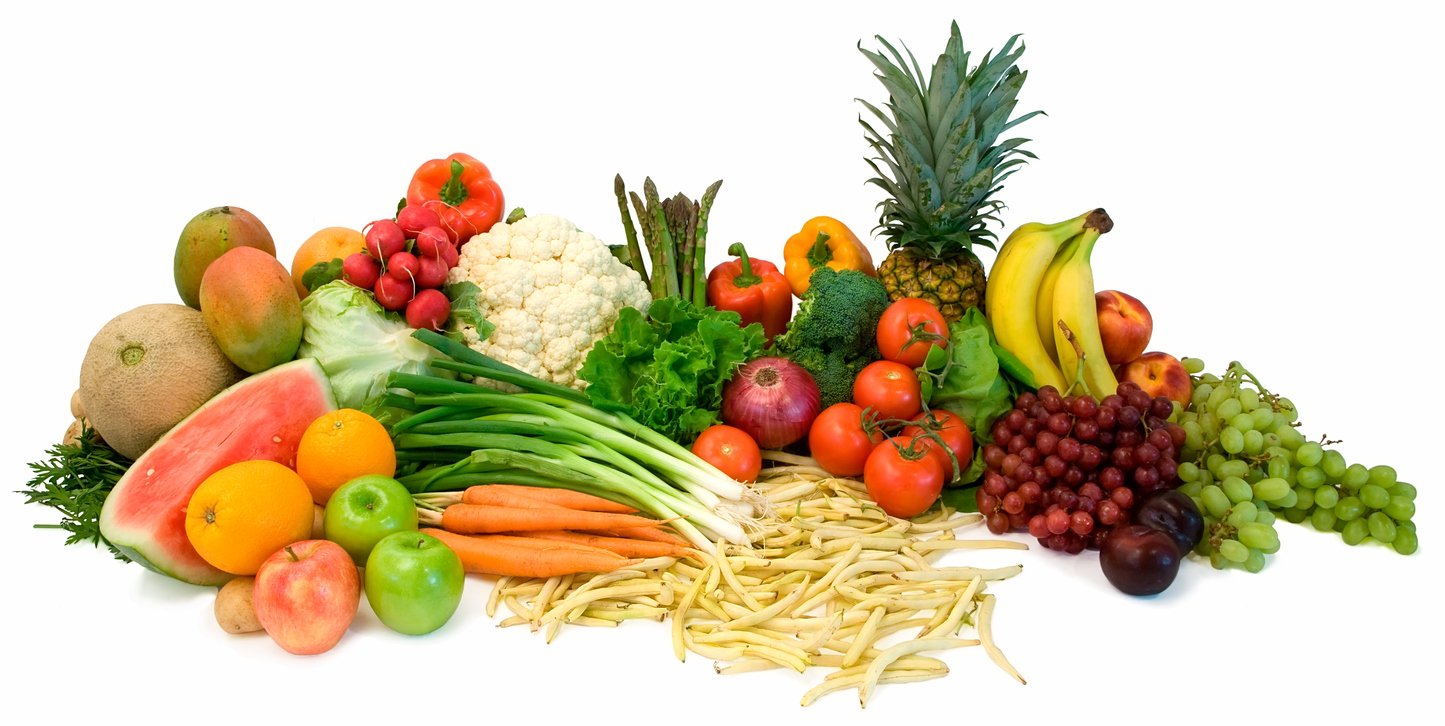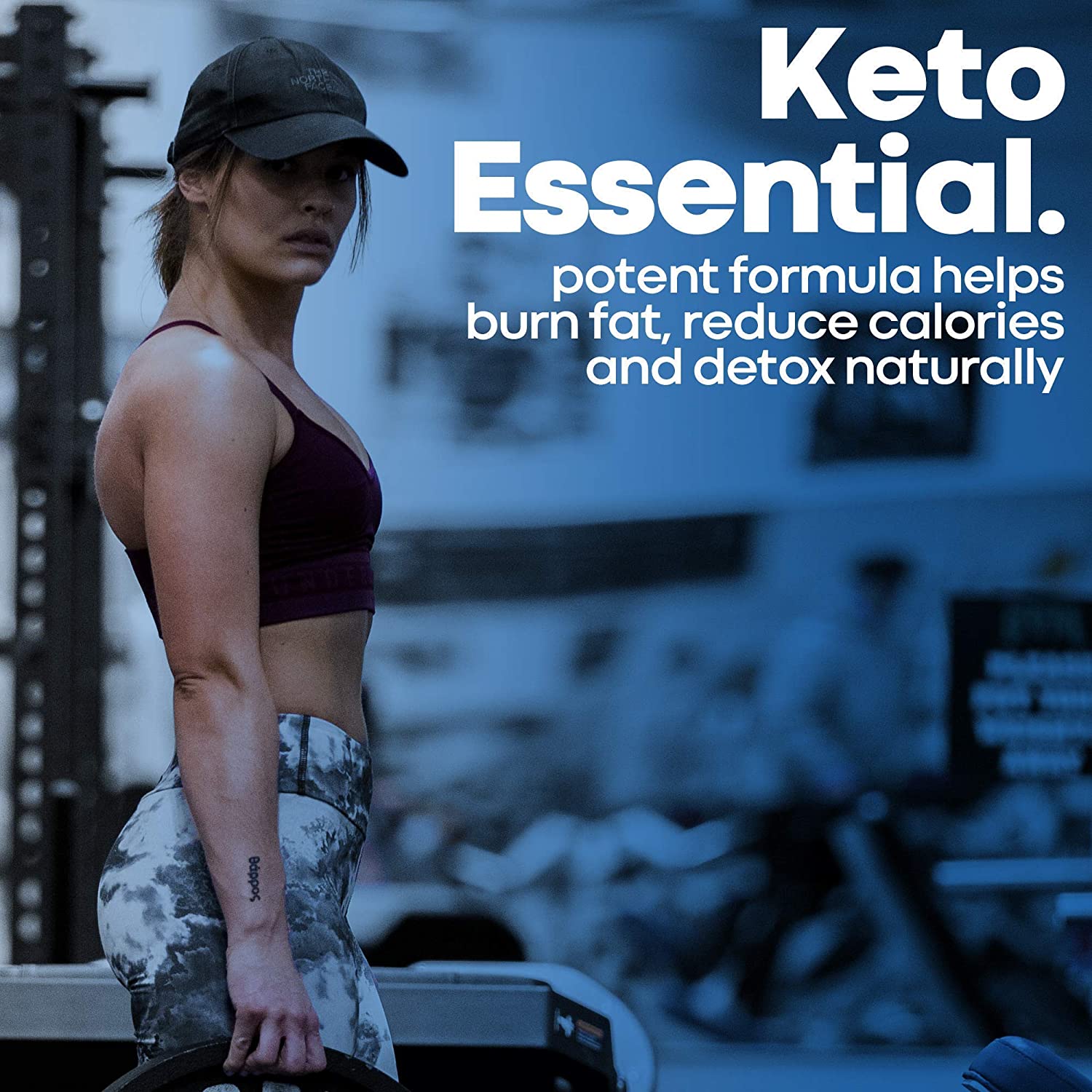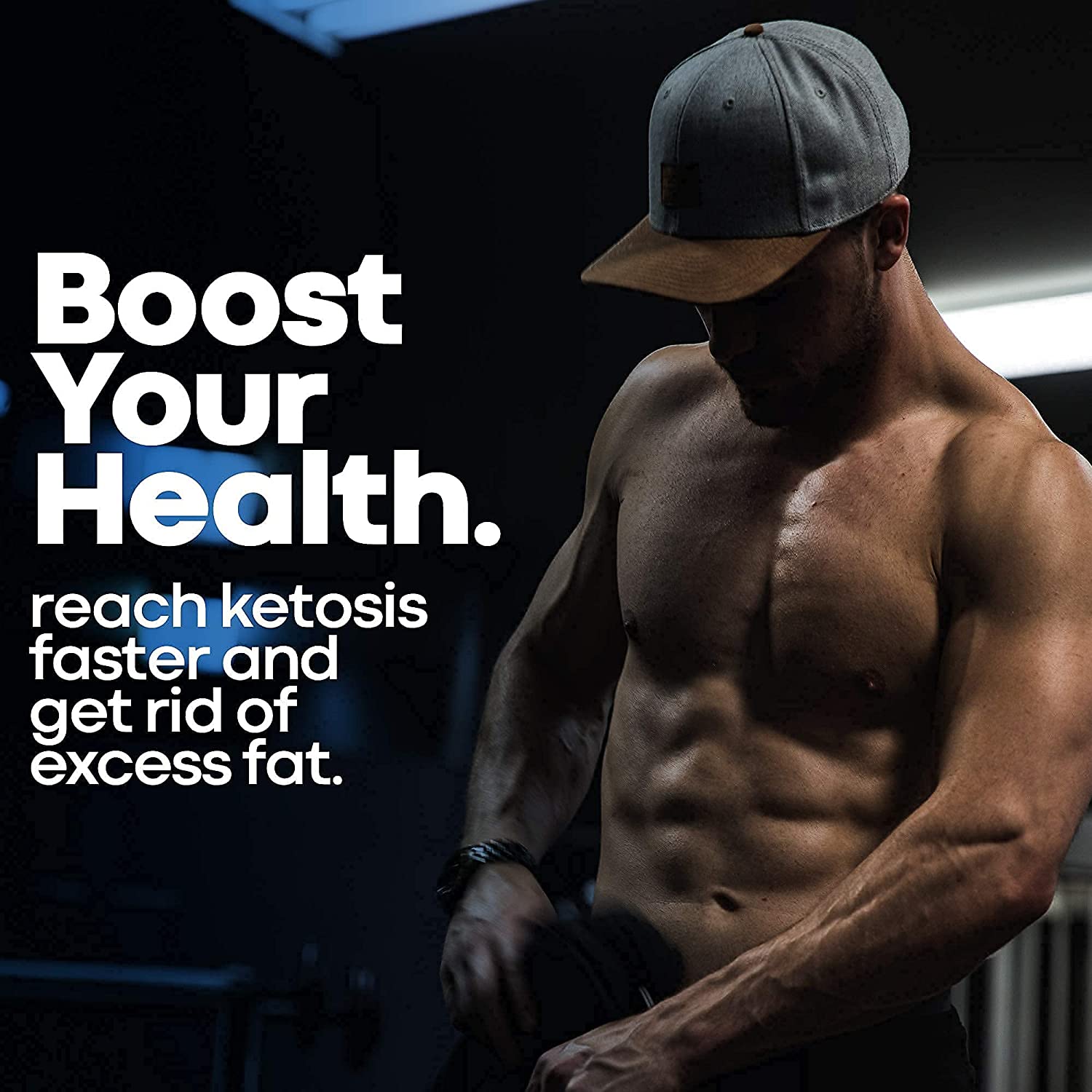The Ketogenic Diet for
Quick Weight Loss!
The ketogenic diet can appear to be pretty unhealthy at first glance due to its high fat content, but I want to include it as a quick weight loss diet on this site as it's very well-known and boasts good results and reviews over the internet, not only for quick weight loss, but for many other health benefits too. So what's all the fuss about? Let's take a closer look!
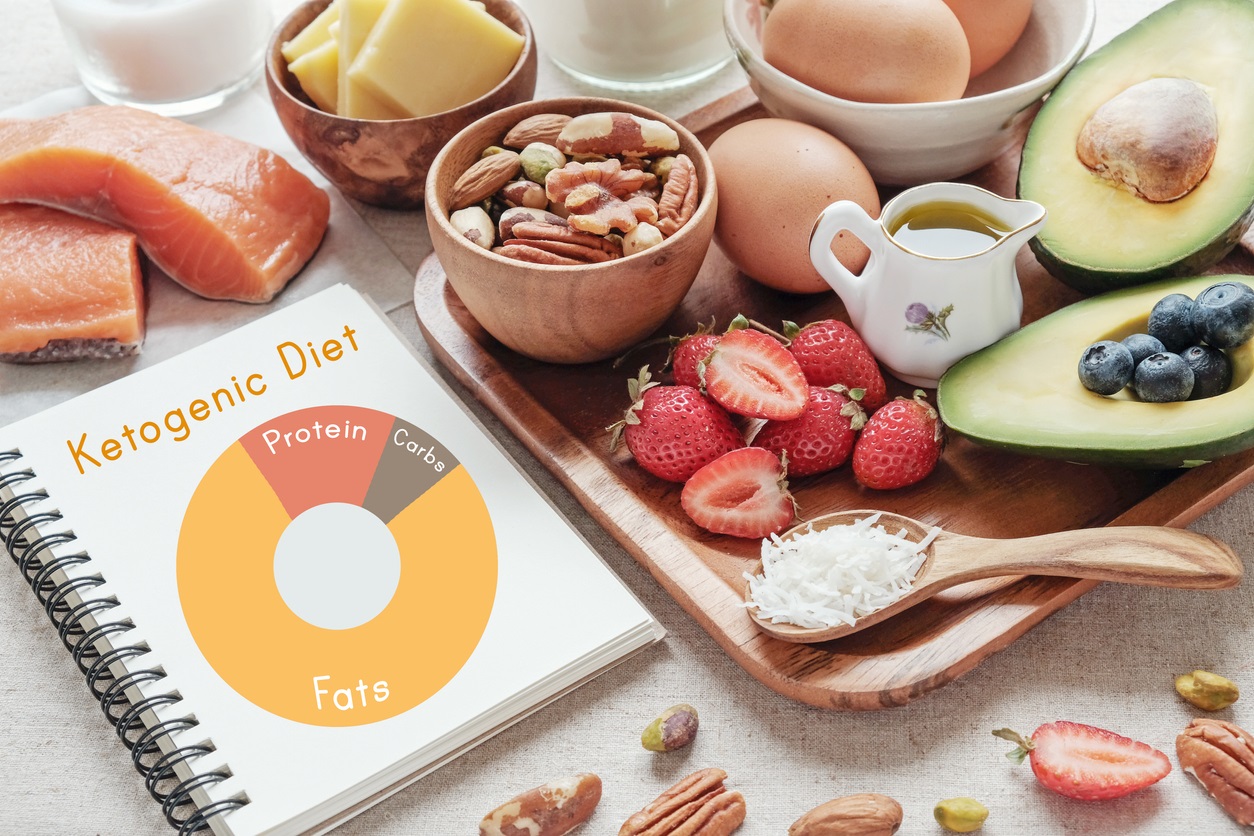
Basically speaking, this diet is a low-carb diet that restricts carbohydrates to a bare minimum, and, not only is it unconcerned about fat intake, it actually encourages you to increase it?! Yes you read correctly, the ketogenic diet actually encourages you to increase your fat intake while restricting carbs?
Deliberately increasing your fat intake does seem contradictory to 'good health' and also for weight loss, but I've found in my research that the ketogenic diet can actually be a healthy diet it seems? In fact, the ketogenic diet has been used in the treatment of many serious health disorders including epileptic seizures and even cancer?! In addition to that is the fact that the ketogenic diet is commonly and successfully used as a powerful quick weight loss dietary approach!
To jump straight down to relevant sub-headings just click the links below.
Ketogenic Diet Best Sellers on Amazon
NOTE: "As an Amazon Associate I earn from qualifying purchases."
Why Reduce Carbs?
The Truth About Carbs
Glucose, Glycogen & Energy
Fats
How Does a Ketogenic Diet Work?
Ketones
Is a Ketogenic Diet Healthy & Safe?
Possible Health Benefits of A Ketogenic Diet
Vegetarian Ketogenic Diet
Ketogenic Food List
The Standard Ketogenic Diet, Creating & Implementing a Ketogenic Diet Plan
One Week Daily Menus
For those who struggle with low-fat diets but need to lose weight, the ketogenic diet could be the perfect answer...
Many people, possibly like you, really don't want to eat that healthy all the time? They're fed up with being told that too much fat is bad for them so they should eat a healthier low-fat diet? They feel they're depriving themselves and feel like they aren't 'living' while on a low-fat healthy diet? Some people just want to eat fat containing foods plain and simple, because, well... they like it!
So, if you're struggling to lose weight but the thought of eating a low-fat diet is actually making you more depressed, then a ketogenic diet plan could be your perfect answer? So please read on as this 'ketogenic guide' will introduce you to the ketogenic diet as it's used today for quick weight loss. I'll also give you some insight into how a standard ketogenic diet differs from a medically-prescribed ketogenic diet, as well as offer some great vegetarian alternatives for those of you who want to start thinking about reducing your meat intake for ethical reasons.
Back To Top
Why Reduce Carbs?
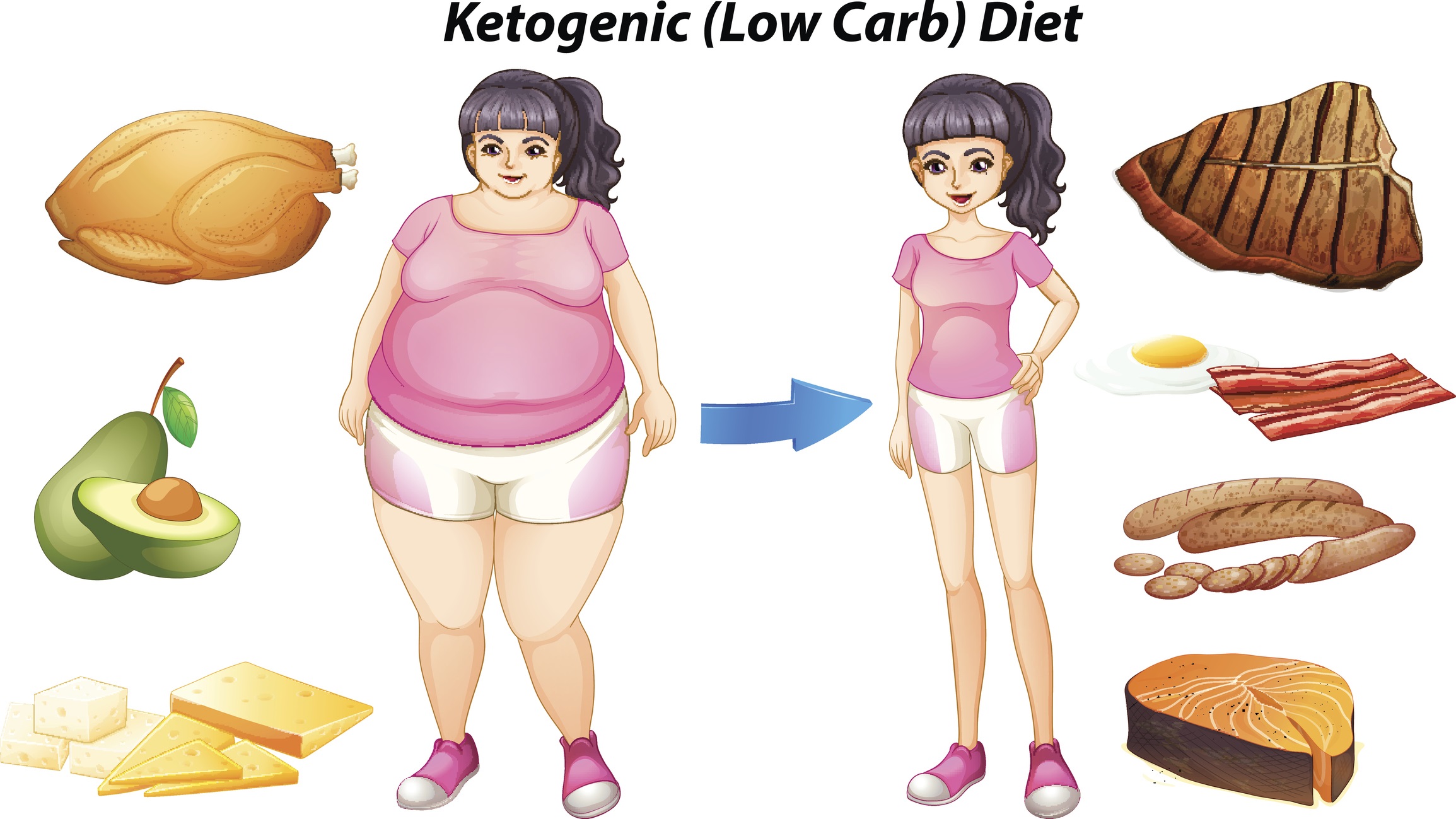
Carbohydrates were once believed to be the culprit of obesity in America so 'low-carb diets' were all the rage, and for many they still are. This changed though when researchers and nutritionists etc. said that whole-grain, unrefined carbohydrates like brown rice, wheat, rye, oats and barley are good for the body and are needed for long-term energy, while refined and over-processed carbohydrates like white bread, white rice, and white flour pastry products as found in pies and cakes as well as non-whole-wheat pasta etc. are bad for us because most of the dietary fibre, iron, and B vitamins are removed during the process.
Now, we have the ketogenic diet plan telling us once again that we should stay away from carbs? Talk about confusing!
I've already discussed reducing carbohydrates in 'quick weight loss tip #2' and also in quick weight loss diet #2 on the home page. I've also discussed the principle of calories with regard to intake and expenditure by the body and how this affects your weight loss or weight gain on the exercise to burn fat page under the sub-heading 'calories?'
Back To Top
The Truth about Carbohydrates
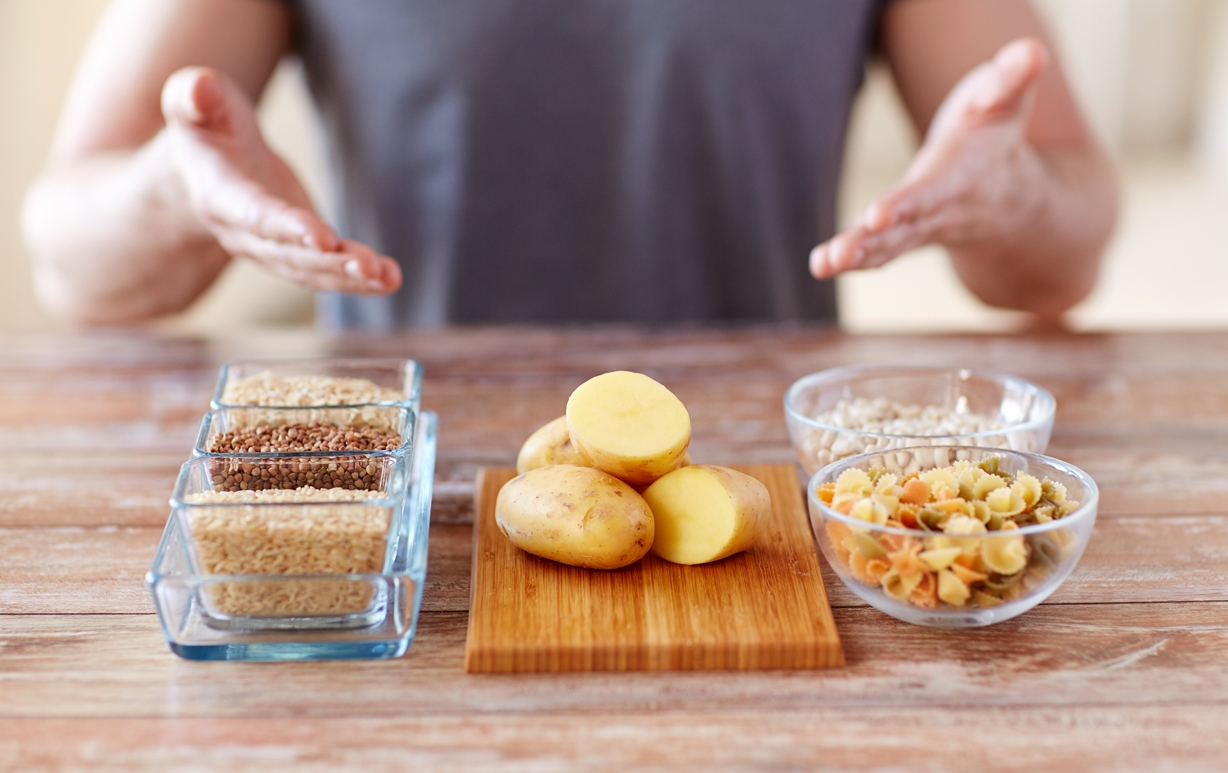
Our bodies get energy from two sources, carbohydrates and fats. And, not only do healthy carbohydrates like fresh fruits, whole grains (brown rice, barley, oatmeal, millet, rye, whole-wheat bread and pasta), sweet
potatoes and regular potatoes give our bodies energy, but we also
get some energy from refined carbohydrates like cakes, biscuits (cookies), pizza and even white bread and
white rice too. All of the above foods also contain a certain amount of fats and sugars which the body also uses for fuel and energy.
Let's face it, we all pretty much know that cakes, biscuits (cookies), pizzas and white flour pastries and white bread etc. are generally all unhealthy and very fattening too so it would be wise to stay well away from these types of 'junk foods' as I've said before if you take a look at the very first quick weight loss tip.
Healthy carbs are good for us though, that's providing we don't eat to much of them? Unfortunately, eating too many carbs generally tends to be the case for most of us. This generally leads to weight problems and in many cases obesity. What's very interesting to me is the fact that most fattening foods, and in particular junk foods, tend to not only be high in fats but are also high in carbohydrate too. This suggests to me that most of the reason junk foods make us overweight is more to do with them being high in carbohydrate than fat?
To understand a little more about how energy production is fuelled by the body and how the ketogenic diet actually works or any low-carb diet for that matter, I need to briefly touch on glucose, glycogen, energy and fats.
Back To Top
Glucose, Glycogen & Energy
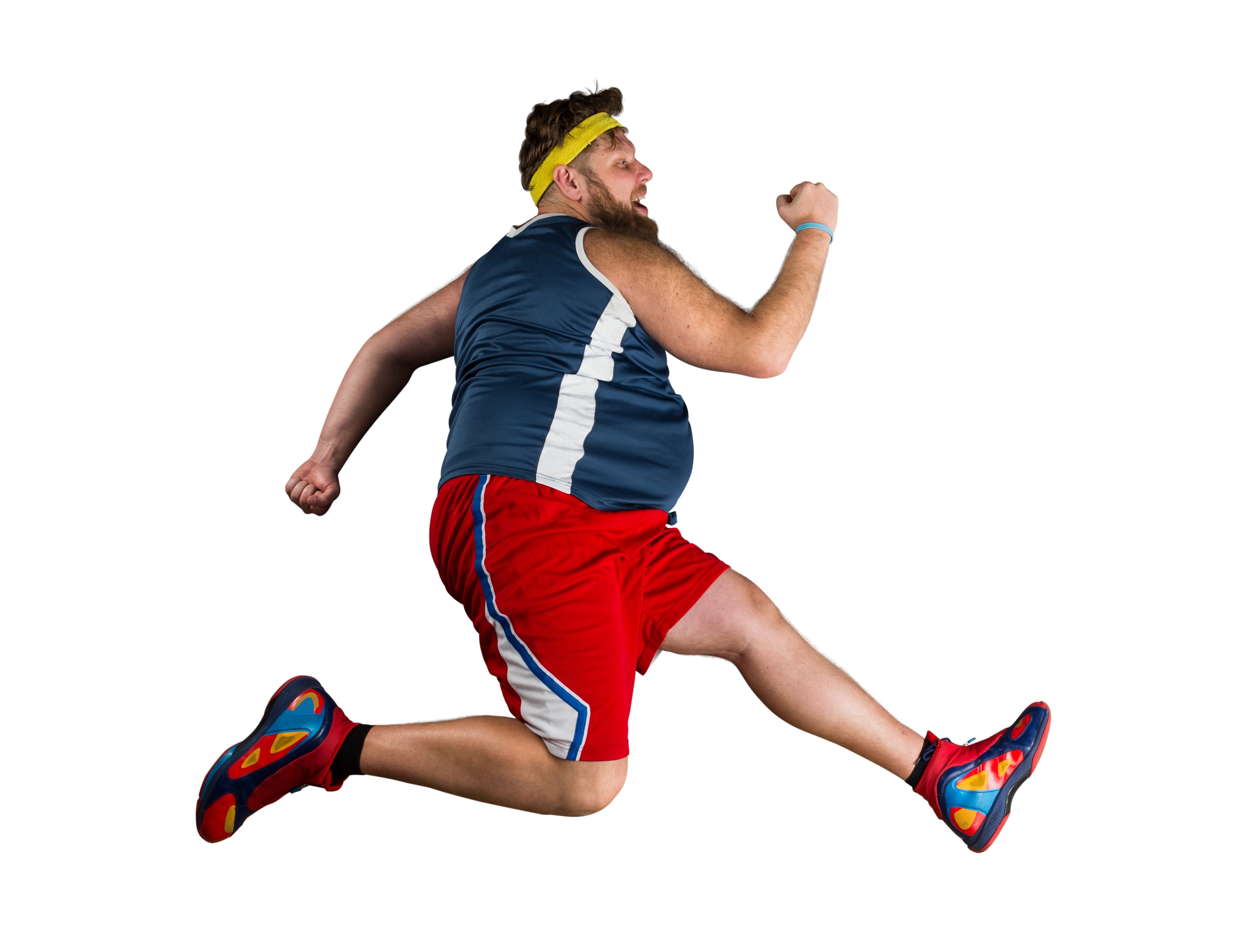
When you eat carbohydrates your body digests and breaks down the starches and sugars in the carbs before converting them into glucose which is a kind of sugar that our body's use for fuel and energy. Insulin is released to help distribute the glucose to the body's cells throughout your body for this purpose - energy. This energy is what allows you to walk across the room, go out for a run, chase your kids around the house, keep your heart beating, your fingernails growing, and your brain processing as you read this information right now. Yes that's right, even sitting still requires energy as there's a lot going on inside your body while you supposedly sit around doing nothing?
When the body doesn't need glucose for energy or when it just has more than it needs, it stores it in the liver and muscles for later use. This stored glucose is called glycogen. When the body needs energy or it's running low on glucose from food, glycogen is broken down and turned back into glucose where it is released into the bloodstream for fuel and energy once again.
The thing is, the body can only store so much glycogen, so, if we just keep eating a high-carb diet that's producing more glucose and therefore more glycogen than the body needs, the body simply turns it into 'adipose tissue' more commonly known as 'fat' for later use. Of course, what generally tends to happen is the diet remains the same and more and more fat is stored on the body for later use which never really does get used at all in fact? This viscous cycle continues so more and more fat is stored for so-called later use?
Back To Top
Fats

It's a similar story for fats too. Any fats in our diet are broken down into what are called 'fatty acids'. Fatty acids are absorbed into the blood stream where they are used by our cells for energy if glucose is not available. Glucose is made from carbohydrates and is the body's main source of energy as discussed above. Now, if glucose is present from the consumption of carbohydrates, which will more than likely be the case for most of us, then the fatty acids, just like our 'extra' 'surplus' and 'un-required' glucose and glycogen above, are also un-required and therefore stored as fat in 'fat cells'.
Another thing to point out is that these 'fat cells' have an unlimited storage capacity, which means the capacity for putting on more and more weight is unlimited?! Our physical bodies are clearly excellent at storing fat as many of you may well already know?
It's no wonder so many people are so over-weight with such high-fat, high-carb diets?
So basically, if you eat more carbohydrates and fats than your body can actually use as energy then the unused carbs and fats will be stored as fat wherever your body decides to put it. Externally, this will more than likely be on your stomach, thighs, hips, face and neck. Internally, it will be in your blood and around your organs, especially your liver and heart but also your intestines.
In short, if you're consuming more fats and carbs, healthy or otherwise, than your body is burning and using for fuel and energy, then you'll almost definitely put weight on, plain and simple. This is not only frustrating to you, but potentially very unhealthy both short and long-term to your overall health and vitality.
Back To Top
How Does a Ketogenic Diet Work?
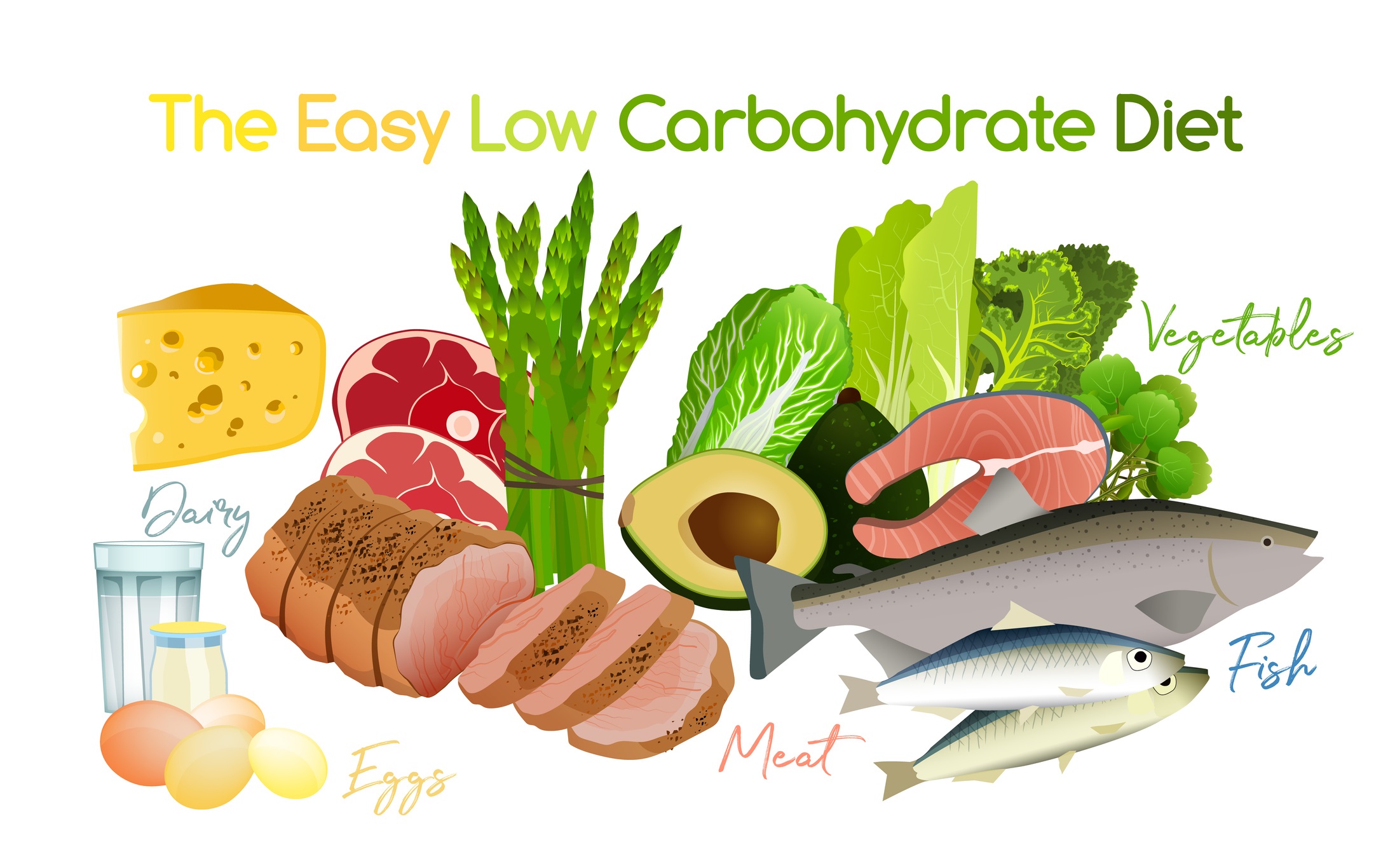
The whole idea of a ketogenic diet is to deplete the glycogen levels in the body that as we know are stored in the muscles and liver as discussed above. A ketogenic diet plan does this by drastically reducing and even completely eliminating all forms of carbohydrate in the diet, including the healthy ones like whole-wheat pasta, brown bread, brown rice and even sweet potatoes.
The idea of the ketogenic diet is to switch the body's energy supply from carbs to fats so the body enters a state known as 'ketosis' or 'ketogenesis' where 'keytones' are produced hence the term 'ketogenic'. In simple terms, 'ketosis' is when the body literally burns its own fat reserves for fuel along with any fats that we add to our diet.
The approach then of a ketogenic diet plan is to almost completely eliminate all carbs but increase fats in the diet to a greater or lesser degree depending on individual needs. This increased fat content in the diet, which for many seems contrary to losing weight as well as 'unhealthy' as I've already said, becomes the body's energy supply along with any fat stored in and around the body, so it's a great way to burn fat and lose weight!
This is exactly what happens when a person fasts or starves and is nature's way of keeping the body alive for as long as possible when food is scarce, by using up fat reserves as fuel to supply the body with energy. This would have been the case for many of our ancestors and is sadly still the case for many poor people in the world today?! The ketogenic diet allows food to be eaten though, so it's not so harsh on the body and serves as a controlled dietary system for quick weight loss.
Prolonged exercise can also have the same effect. It's well-known that marathon runners can 'hit the wall'. This 'wall' is the point that the body has depleted all its glycogen reserves and switches over to burning pure body fat, if indeed there is any fat there to be used?
In a nutshell, once you start a ketogenic diet and lower your carbohydrate intake, your body doesn’t have that steady delivery of carbs to produce glucose and/or glycogen for fuel and energy. Your system then kicks into 'ketosis' where your liver starts breaking down stored fat which creates 'ketones'. These ketones become the new source of energy for the body along with any fat that's in the diet.
Back To Top
Ketones?
Understanding exactly what a ketone is doesn't really matter to be honest, but I just thought I would throw some light upon them anyway for those interested. Basically speaking, and to simplify, we could say a ketone is a 'small molecule of fuel'. This molecule of fuel is produced in the liver from 'adipose tissue' more commonly known as 'fat'.
Trying not to repeat what has already been said, this only takes place when the body's normal fuel supply, which as we know comes from glucose, is not available and glycogen levels are also depleted. The liver then produces these 'small molecules of fuel' we call 'ketones' to provide the body with another source of fuel for energy.
As already mentioned, ketones are produced from fat, so a ketogenic diet is a simple but very effective approach to quick weight loss, as all available fat will be used to provide the now 'glucose deficient body' with fuel for energy, great!
Back To Top
Is a Ketogenic Diet Healthy & Safe?
Whether a ketogenic diet is a healthy dietary system for quick weight loss or not, is, like many diets, a matter of differing opinions. This is especially so when diabetes is mentioned as there can often be some confusion?
The thing is, when someone talks about how dangerous or unsafe the ketogenic diet is, especially when referring to diabetes, they are more than likely thinking of 'ketacidosis' rather than 'ketosis'. These names sound so similar that many people don’t realise that they are in fact completely different. They both refer to higher levels of ketones in the blood, but ketoacidosis occurs in people with type I diabetes when extremely high levels of ketones mix with high blood sugar levels. The condition is dangerous and requires immediate medical attention, but it isn’t what occurs when you follow a ketogenic diet plan.
Ketosis, on the other hand, the physical state entered during a ketogenic diet, does also produce higher ketone blood levels than you'd normally have if you were eating more carbohydrates, but it's completely safe to the best of my knowledge, providing;
- you ARE NOT diabetic, period
- if you are diabetic, you DO NOT MISS any of your insulin doses
Note: If you are diabetic or have any other medical condition please talk to your doctor or medical professional for more advice before starting any radical change of diet. And, if you are diabetic, please read this article for diabetics...
What about Saturated fats?
Something that I've mentioned and others may be concerned about is the consumption of saturated fats. The thing to remember with the ketogenic diet is that the main source of fats ought to come from healthy fats which will be discussed in more depth later. Saturated fats are consumed on this diet but only in moderation. Don't forget also, the general idea is that once your body gets into a state of ketosis the fats will be burned up for fuel anyway.
Conclusion
Generally speaking, for the vast majority, I would say the ketogenic diet is completely safe and a great quick weight loss diet that offers a variety of potential health benefits other than weight loss as we can see below.
Back To Top
Possible Health Benefits of a Ketogenic Diet
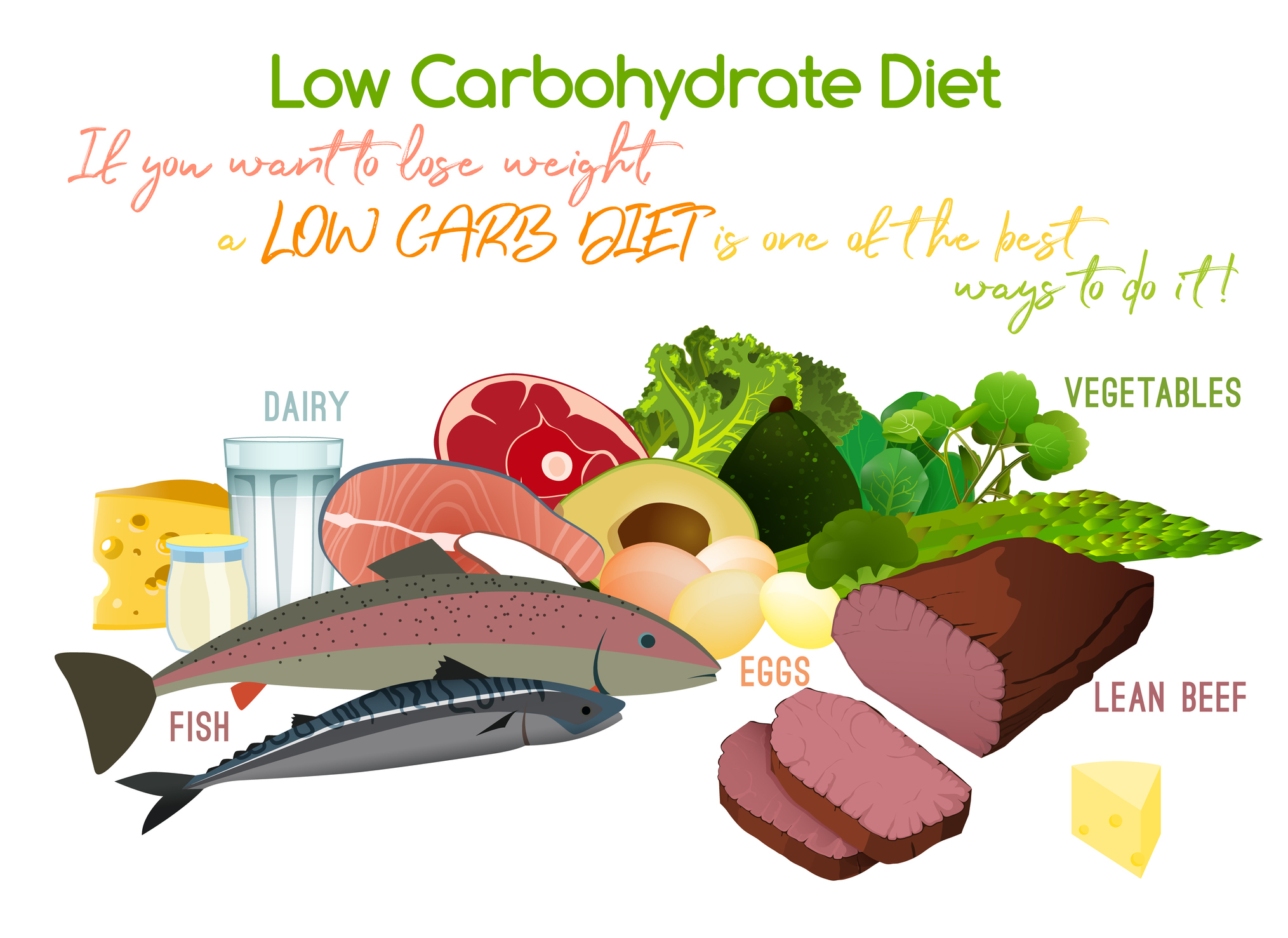
Apart from the quick weight loss benefit of the ketogenic diet there's a lot of other potential health benefits too. Some may seem too good to be true and even far-fetched, but let's take a quick look at what they are before I give my personal opinion on this somewhat controversial subject.
- Reduced appetite
- Accelerated weight loss
- Lower triglyceride levels
- Reduced blood sugar levels
- Greater type II diabetes control
- Reduced risk of heart disease
- Improved cognitive functioning
- Reduced epileptic fits (seizures)
- Reduced risk of Alzheimer’s disease
- Reduced risk of Parkinson’s disease
- Reduction of Chronic Inflammation
- Reduced risk of Obesity
- Reduction of Polycystic Ovary Syndrome
- Reduced risk of Fatty Liver Disease
- Reduced migraines
- Potential Cancer treatment
Like most things, there are arguments
for and against as to the reasons why any particular dietary system actually works.
For me personally, due to my background in low-carb diets, low-calorie diets,
low-fat diets mixed with cleansing diets and fasting, I have a more holistic
understanding and explanation as to the reasons why the ketogenic diet actually
works both as a quick weight loss system, but in particular for the benefit of our discussion here, a 'health benefit diet'.
Quite simply, I put it down to detoxification.
Any radical change of diet that has its roots and principle approach in a 'reduction' of some kind or another, has, in its essence, whether big or small, some form of 'cleansing' or detoxification on the physical body. I am not a scientist and have never wanted to be one and anyone who has been reading my words on this site will know that my main approach to general health is 'detoxification' so as to encourage a gentle cleansing of the system. This is how I look at any diet given my understanding of food and its effects upon the body taken from my personal experience, and, is also how I try to eat consistently in my everyday life.
I know myself, when eating a cleansing diet and especially when fasting, any muscular aches or tension that I've had literally disappear! This proves this simple truth to me; The ketogenic diet is nothing more than a ‘reduction diet’ that simply reduces our intake of food stuff one way or another, which in this case, is in the form of 'carbohydrates' which can be very heavy on the system as a whole, particularly when they are eaten in such a glutinous way as is the case by most of the population of the Western world today?!
Basically speaking, the ketogenic diet's roots and 'working principle' is a significant reduction of carbohydrates which allows the body some form of relief. This allows and encourages an 'inner-cleansing' and a mild detoxification to a greater or lesser degree. This brings about a release of energy, a clearer mind, and the reason why you are here now, quick weight loss! Please read about detoxification to understand what I have said here.
I'm not going to try to explain any of these potential 'health benefits' from a scientific point of view as that is not how I see things as I've said. They're well-documented on various sites though which I will hopefully be adding links to soon. I will have a quick chat about a reduced appetite though, as I know many of you will have this but are still struggling to lose weight?
Reduced Appetite
A reduced appetite can help us significantly when trying to lose weight as it will obviously help us to stop over-eating. A reduced appetite happens when the digestive system expects less food due to a reduction of food supply which can often happen on a ketogenic diet. A reduced appetite can also happen as a result of an illness but we aren't going to discuss that here.
Whenever I've fasted, after the first day is over there is no hunger at all as the digestive system literally goes to sleep. So, if you're in the 'right physical condition' to undertake a fast safely then fasting can actually be pretty easy. If you are not in the 'right physical condition' however, fasting can be dangerous. So do not fast until you've learnt about fasting and have taken the necessary progressive dietary steps towards that aim. This is a whole subject that I will be writing about in due course.
It's also true that some people who have low appetites are still overweight? This is different to a reduced appetite due to reducing your food though, and is the result of a slow metabolism which can be corrected by 'speeding it up' as discussed on the first quick weight loss diet on the home page. This 'speeding up' of the metabolism or 'metabolic rate' as it's also known, can be increased even further when combined with a gentle exercise routine.
Physical exercise will stimulate the system and help to get everything moving including your metabolism! Have a look at some of the first three or four simple exercises to burn fat for some ideas, and remember, you don't have to go mad with exercise to gain benefits. I discuss that in more depth on that page.
The point is, over time as you clean up your act as far as diet is concerned you will eat less and therefore expect less as your body becomes more accustomed to it. As long as you're getting all the nutrients your body requires, the result will be a slimmer, more energetic, healthier, happier you!
Back To Top
Ketogenic Food List
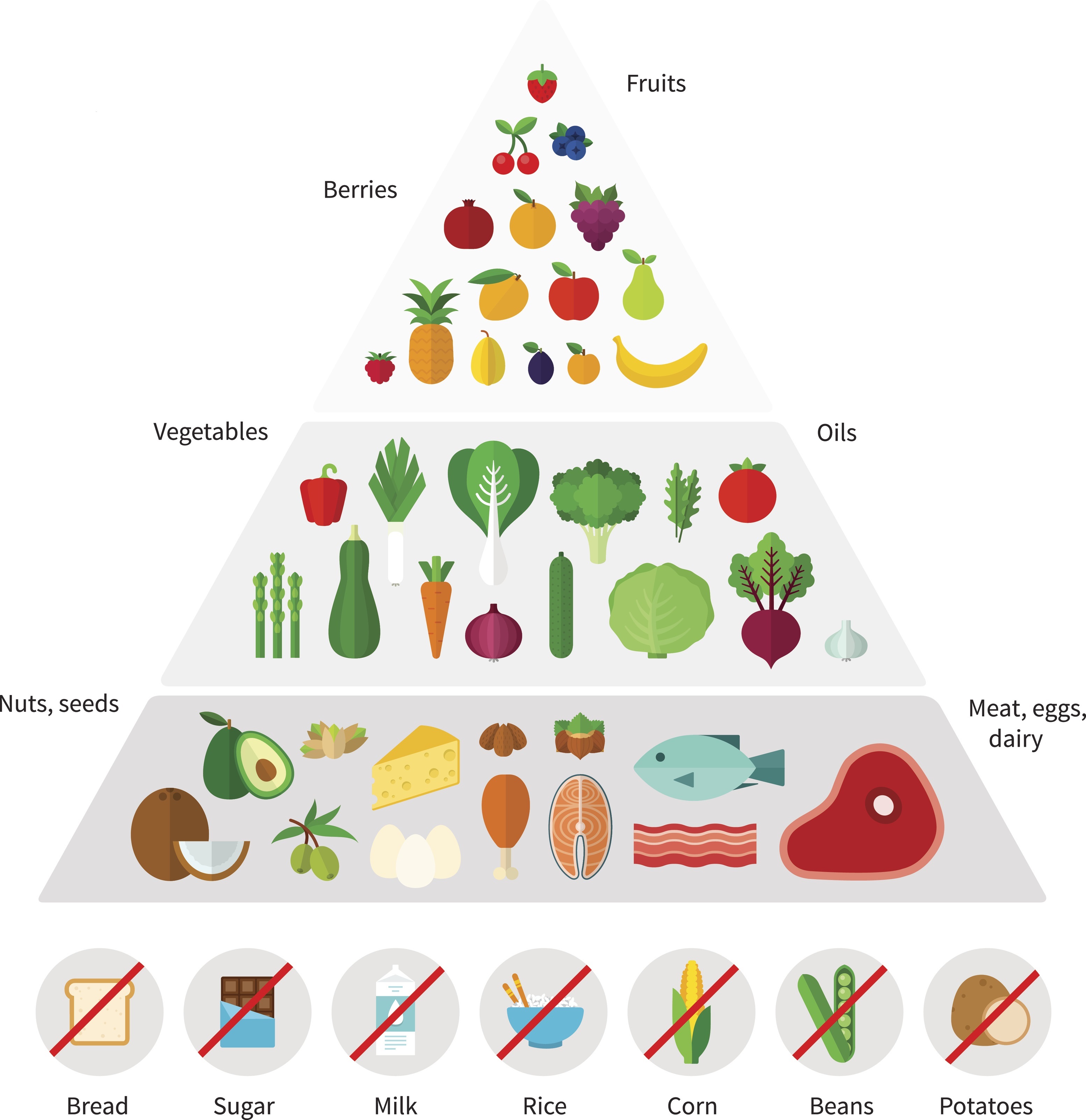
The ketogenic food pyramid above gives us a rough outline of the foods eaten on the ketogenic diet. These are discussed in more depth further down under three main headings; 'Eat These Foods Freely', 'Eat Less of These Foods', and 'Avoid These Foods Completely'. It's important to realise that there are slightly differing opinions on what should be in the first two categories. The thing to remember is common sense prevails, and with practice and observation of how your body reacts to foods, you'll soon work out the details yourself to tailor the diet to your own body's individual needs.
Always read the nutrient list on all foods before you buy them and aim for foods that have around a 5% or less carbohydrate content. The reason for this is so you can eat enough food and still remain under the maximum threshold of 50g of carbohydrate intake per day.
I'm sure you know, but just in case you don't, 5% would be 5g per 100g. So, any food that is showing over 5g per 100g for carbohydrate on its nutritional label should generally be avoided if you want to reach 'ketosis', which as we now know is the state where your body burns its own fat reserves for fuel. This is a general guide of course as the main thing is that you stay within the required daily carbohydrate level of 50g or under. However you choose to do that is up to you based on the foods you consume, how large your meals are, and how often you eat.
Note: Remember, you'll have to work out how much carbohydrate you're taking in based on the information on the nutritional lists on the side of all foods you buy. This is easy enough to do. You can weigh the individual foods and work it out from there based on the information on the nutritional list on the side of the package, or, you can guess the weight by looking at the weight of the food package that should also be clearly visible on the outer packaging somewhere. If for example a tub of cottage cheese is 300g then you know a third of that will roughly be 100g, right? You then know how much carbohydrate you'll be taking in as it says what it is per 100g on the nutrition list on the outer packaging.
A ketogenic diet requires you to consume UNDER 50g of carbohydrate per day. As you become more accustomed to the diet quite a bit less than that is the goal. Many experienced ketogenic followers try to stay below 30g and others may even go as low as 10g of carbohydrate intake per day. Some enthusiasts may even mix it up for different days depending on how they feel and how active they might be with their work load etc. This is discussed again further down at the link below...
The Standard Ketogenic Diet, Creating & Implementing a Ketogenic Diet PlanBack To Top
A Vegetarian Ketogenic Diet Plan
Whether you’re trying to lose weight or you just want to get healthier, or both, you should always try to include the healthiest most natural food sources as far as possible. Therefore, always try to avoid processed foods such as those that contain colourings and preservatives as far as possible. The best way to do this is to eat whole foods in their most natural, basic form.
If like me you’re against eating animals, then this can be a little difficult at times as many of the mycoprotein vegetarian alternatives like Quorn are of course processed. The really good thing is that they're low in carbohydrate and saturated fat so for me it's a no-brainer really, especially as everything else I eat is as clean and healthy as can be.
For the ketogenic diet and the daily menus further down, all you have to do is simply cut out the animal fats and meat products and replace them with vegetarian options which I will include in the text. Do keep an eye on the nutrition labels yourself though as some veggie options can contain higher levels of carbohydrate. The best options are Quorn chicken pieces and chicken fillets as well as Quorn mince and Quorn steak strips. These all come under the 5g per 100g of carbohydrate content.
That said, depending on your preferred daily threshold of carb-intake, it would be totally OK to eat something else from the veggie range that was higher in carbs. Remember, the main thing is that you stay below your chosen daily carb-intake. Whether it's 50g, 30g, 20g or 10g, how you choose to do that is up to you depending on your choice of foods. You could eat 20g of carbs at one meal, 20g at another and 10g at the last, that's if you only eat three meals per day specifically of course? How you get your daily carb-intake is up to you!
See the US Quorn Store Locator.
You may ask why I include meat in the various diets on this website if I’m vegetarian? The answer to that question is simply because I realise not everyone is like me. Many of you want to give up meat but can't and many of you simply don't want to give it up plain and simple. We all have our own personal opinions and preferences which is fine of course, although I do find it strange that in today's society we are still lining up innocent animals for slaughter when we really don't need to? Oh well, it is what it is I guess.
Personally, I do not believe it's good for the body if we eat a lot of red meat though. This is nothing to do with me being a vegetarian rather I simply think it’s bad for the body in general based on good evidence all over the internet as well as looking at the health of many people who have a lot of red meat in their diet? I personally gave up red meat for health when I was training in my youth long before I became a full vegetarian.
I think it’s far better to replace red meat as much as possible with fatty red fish such as salmon or mackerel, not only for the ketogenic diet, but also for better health in general. In fact, increasing fatty fish intake and reducing red meat can be a very helpful ‘transition diet’ for those of you who want to try eating a vegetarian diet but love red meat and find the thought of giving it up a bit too much? Please also read vegetarian facts.
Vegetarian Ketogenic Diet on Amazon
NOTE: "As an Amazon Associate I earn from qualifying purchases."
Back To Top
Healthy Fats & Unhealthy Fats
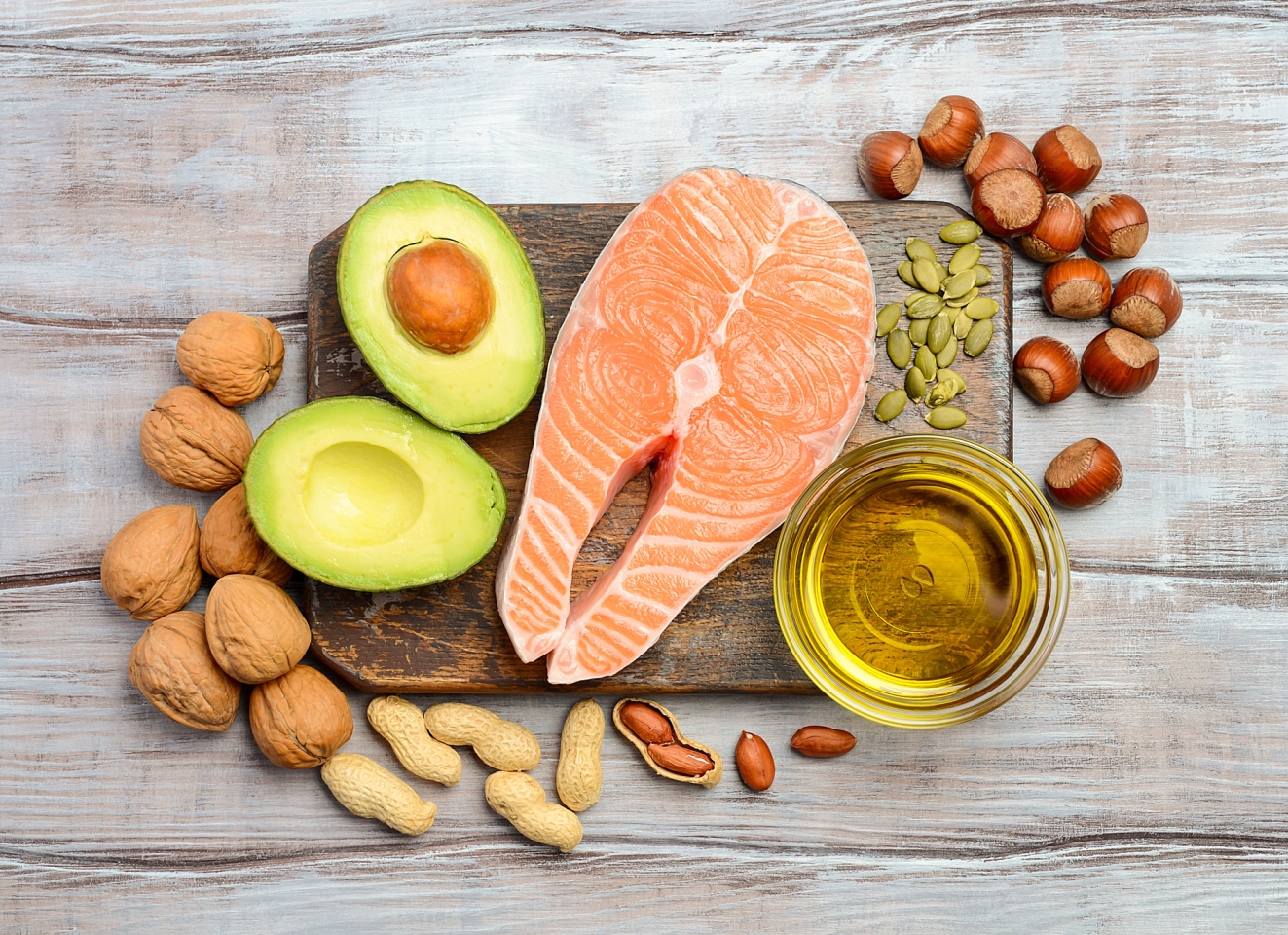 Some healthy fats for the ketogenic diet
Some healthy fats for the ketogenic dietRemember, a ketogenic diet is all about eating low-carb foods and increasing ‘healthy fats’ in your diet along with some 'unhealthy fats' too at times. Although some fats are important for our bodies, there are also some that are not and which can even be potentially dangerous if you’re eating too much of them? Therefore, having some basic understanding and knowledge of the various types of fats we eat is pretty important I think, particularly as the ketogenic diet focuses on increasing these fats in our diet.
It's interesting to note that in our 'fat list' below saturated fats are actually considered safe in moderation? The word 'moderation' suggests saturated fats are not really ideal or we could eat them freely? This is why too much red meat is not a good food source in my opinion, along with hard cheese and cream etc.
- Saturated Fats. These are considered safe in moderation and are eaten on a ketogenic diet. They include; fatty meats, butter, ghee, lard, hard cheeses, cream (incl. ice cream, sour cream) coconut oil.
- Mono-unsaturated Fats are also safe and eaten on a ketogenic diet. These include nuts and natural oils such as olive, safflower, sesame, canola oil and nut oils such as; peanut oil, almond etc.
- Polyunsaturated Fats that occur naturally in animal protein especially fatty fish are good for you and are also eaten on a ketogenic diet. There are also processed polyunsaturated fats though such as those in some so-called ‘heart healthy’ margarines which should be avoided completely.
- Trans Fatty Acids (Trans Fats) are processed fats that have been chemically altered (hydrogenated) to prolong shelf life. These have been linked to heart disease and should be avoided completely. They are found in various margarine spreads and processed cooking oils.
Ketogenic Food List
Eat These Foods Freely
Eat Freely Shortlist
- Meat (preferably white)
- Fatty/oily fish
- Oils - olive oil, nut oils, avocado oil, coconut oil etc.
- Avocados
- Olives
- Low-carb vegetables
- High-fat, low-carb sauces and condiments
Meat and Animal Sources
- Ideally grass-fed, free-range and corn-fed unprocessed meat products that include; beef, lamb, pork, chicken, duck, goose
- Wild-caught fish and seafood
- Offal such as liver, heart, kidneys and other organs (yuk!)
I’ve never thought it a healthy thing to eat the internal organs of dead animals but they’re on the ketogenic food list so feel free if that's your thing. Don’t eat more meat than normal though, and don't forget, the ketogenic diet is a high-fat diet that should not contain too much protein either. Not only is too much protein bad for the body in general, but it will also make it harder for the body to enter a state of ketosis (the body metabolizing fat for fuel) due to the conversion of extra protein into glucose.
Also, be aware that many processed meats such as sausages and meat balls can often contain added carbohydrates to pack them out to add weight and substance, so always remember to read the ingredient and nutrient lists and only consume foods that have a 5% or under carbohydrate content.
Oily/Fatty Fish That are High in Omega 3’s
- Anchovies
- Bloater
- Carp
- Herring
- Jack
- Kippers
- Mackerel
- Pilchards
- Salmon
- Sardines
- Trout
- Tuna
Fats & Oils
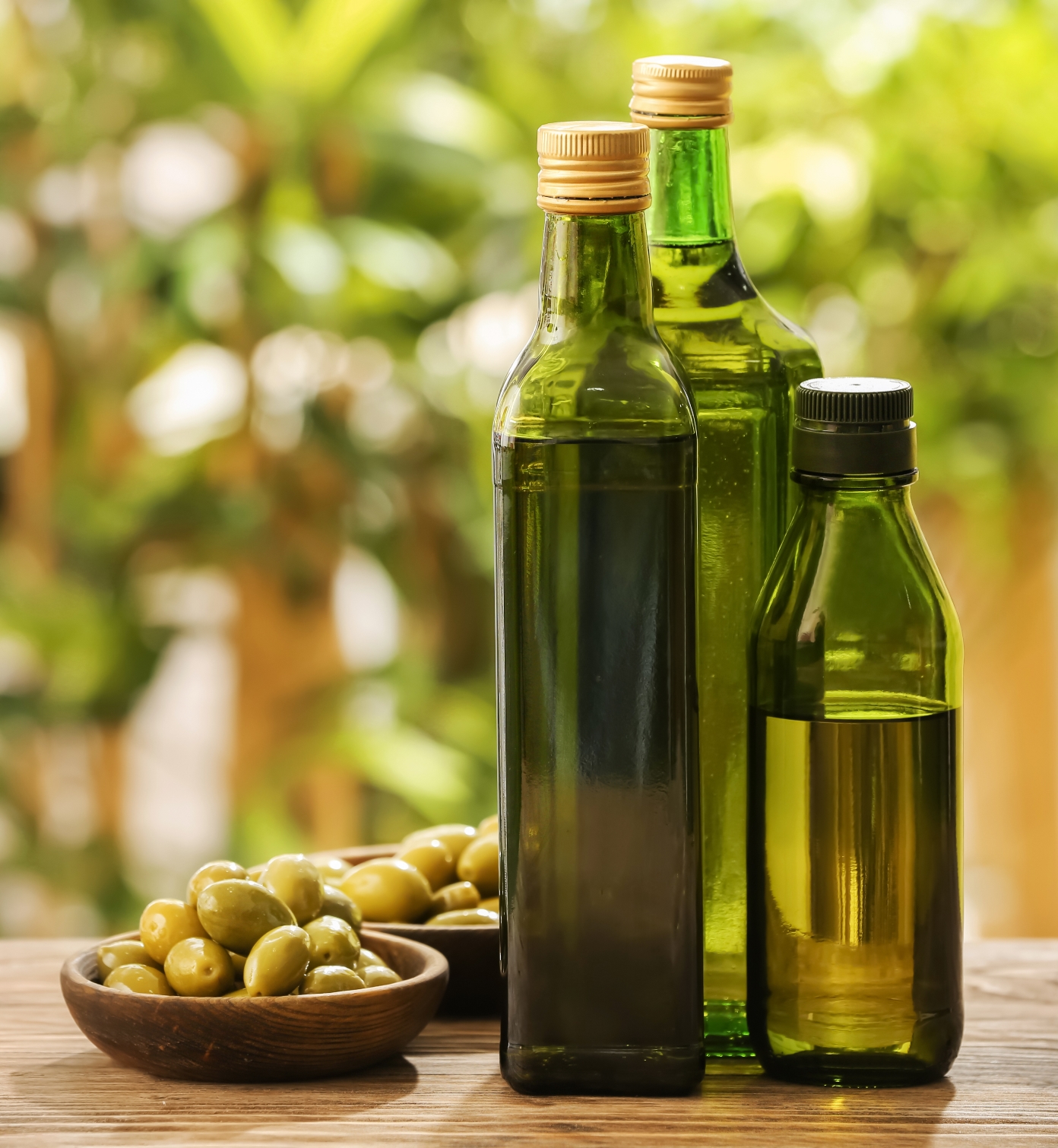 Cold pressed virgin is by far the best
Cold pressed virgin is by far the bestAlways try to purchase ‘cold pressed’ oils if you can afford to. They have more ‘good stuff’ in them due to the process how the oil is extracted as heat producing methods destroys many important nutrients. Also go for non-hydrogenated versions of lard, tallow, ghee, or coconut oil. These have higher smoke points than the hydrogenated versions which allows less oxidation of the oils when used for cooking. This means you get more of the essential fatty acids, not to be confused with the unhealthy trans-fatty acids! See further up on trans-fatty acids.
The calories you consume on a ketogenic diet are predominantly derived from healthy fats. A lot of it will come from the main foods you’ll be eating such as meat, fish, dairy, eggs, olives and the all important avocado. The following list also gives us lots of oils that can be used liberally in cooking along with butter and/or coconut fat. These oils can also be used freely on salads to help get in those high-fat calories so important for the ketogenic diet. If you want to go veggie or you're a vegetarian already then simply cut out any fats derived from dead animals.
- Monounsaturated fats in solid forms and their respective oils such as; avocado/oil, macadamia nuts/oil, almond nuts/oil, peanuts/oil, walnuts/oil, olives/oil (extra virgin cold-pressed), coconut/oil, sesame oil
- Polyunsaturated omega 3s such as fatty fish and seafood as listed above
- Saturated fats (lard, tallow, chicken fat, duck fat, goose fat, clarified butter (ghee), butter, coconut oil and MCT oil)
MCT oil ('Medium Chain Triglycerides' or fatty acids) is derived from palm kernel oil and coconut oil. It's said to be metabolised more easily by the body than standard oils of the same due to the removal of the long chain fatty acids and lauric acid. MCT oils are rapidly digested and absorbed, and thought to provide a useful and clean source of energy. MCT oil is great for the ketogenic diet and can be purchased online easy enough.
Fruits
- Avocado
- Olives
- Cucumbers
The ideal fruit for a ketogenic diet is the avocado due to its high content of healthy monounsaturated fat and low carb-count - more on that in a moment. Another good fruit for a ketogenic diet is the olive due to its zero carb-content but moderate fat-content. Avocados and olives are fruits? Yep, that's right. Just in case you didn't know, anything with a seed inside is considered a 'fruit'.
So, cucumbers, peas, aubergines (eggplant), butternut squash, pumpkins, courgettes, marrows and tomatoes are all considered 'fruits' all of which can be eaten on a ketogenic diet to a greater or lesser degree. Even nuts are considered a fruit as well as a legume as they are also known.
The best fruits for the ketogenic diet with 'ketosis' in mind, are avocados by far as well as olives. Both these fruits are high in healthy monounsaturated fat but low in carbohydrate and can therefore be eaten freely. The avocado in particular is an incredible food in its own right as I'm sure you may have heard? It's a littler packet of healthy nutrition that's full of healthy monounsaturated fat but low in carbs. Some people think the avocado is too high in carbs for the ketogenic diet but it's slightly misleading.
 The avocado is one of the best foods for the ketogenic diet & definitely the best fruit!
The avocado is one of the best foods for the ketogenic diet & definitely the best fruit!One whole avocado roughly weighs 200g and contains around 18g of carbs. This means half an avocado is about 100g and has a carb-content of 9g. This is way above our guideline of 5g per 100g? The thing is, about 14g of a whole avocado's carb-content is 'insoluble fibre' which means your body can't digest it. This leaves only around 5g of carbohydrate for one whole avocado that your body can digest. This is the equivalent to 2.5g of net-carbs per 100g which is roughly half an avocado, great!
From the discussion above we have seen that the avocado provides a good level of healthy fibre. This is something that a ketogenic diet tends to lack in considerably, so the avocado plays an important role in making up this short fall in addition to its high level of healthy monounsaturated fat.
Don't forget, the ketogenic diet is a low-carb diet and fruits are pretty high in carbohydrates so you can't eat them all. Generally speaking, the sweetest fruits are the highest in carbohydrate. It's all that lovely sweet-tasting fructose (fruit sugar) that tastes great but is a definite keto no no! Some fruits can be eaten in moderation though and are covered in the next two sections later on.
Non-Starchy, Low-Carb Vegetables & Fruit Vegetables
Vegetables that grow below the ground are starchier and therefore have higher carbohydrate content than those that grow above ground so this is a good guide for you to choose wisely. Those that grow above ground therefore take preference for the ketogenic diet. Eat fresh or frozen vegetables, either is fine.
- All green leafy vegetables such as; cabbage, bok choy, chard, endive, kale, lettuce, spinach etc.
- Asparagus, butternut squash, bamboo shoots, celery, chives, cucumber (really a fruit as it has internal seeds), radishes
Sauces and Condiments - Natural, High-Fat, low-carb only
Any reasonably healthy, high-fat sauces with less than 5% carbohydrate content can be used. Any other sauces are fine too providing they’re sugar free as sugar is CARBOHYDRATE! Read the ingredient list to be sure.
- Mustard, pesto, pickles, sauerkraut
- Soy sauce
- All-natural herbs and spices
Beverages
Drink as much water as you can, preferably the recommended 8 glasses or more of water every day to keep hydrated! Flavour with fruit cordial if you wish but only use those with NO ADDED SUGAR.
- Still or sparkling water (flavoured or not), black coffee or with cream or coconut milk, tea with cream or coconut milk, any herbal teas
- Lemon and/or lime juice with/without zest
Remember, no sugar as it's too high in carbohydrate.
Back To Top
Ketogenic Food List
Eat Less Of These Foods - 25%-30%
Exactly how much or how little of these foods you should eat depends on what you set as your daily carb-limit. This will take experimentation on your part as we're all slightly different and can react differently to a radical change of diet. A ketogenic diet takes time and practice to get it right.
Grain-Fed Animals Sources
- Beef, poultry, eggs and ghee
- Bacon - watch out for preservatives and added starches
Vegetables
As previously mentioned, root vegetables contain more starch and carbohydrate so they need to be monitored. Vegetables like sweet potatoes and parsnips can be included on a ketogenic diet but only in moderation. Such times might include when you're feeling a bit low or depleted. Also, if you want to do some form of exercise or you have extra work to do and think you're going to need some extra energy, then that might be a good time to take in some carbs too. In such cases you would ideally eat those 3-4 hours before your planned exercise to allow time for digestion, absorption and circulation of nutrients throughout the body.
- Artichoke
- Aubergine (eggplant)
- Bell peppers
- Broccoli
- Brussel sprouts
- Cauliflower
- Fennel
- Leeks
- Mushrooms
- Onions
- Peas (really a fruit)
- Spring onions
- Swede
- Sweet potatoes - very moderately or when needed as discussed above
- Tomatoes
- Turnip,
- Sea vegetables such as nori and kombu
Dairy
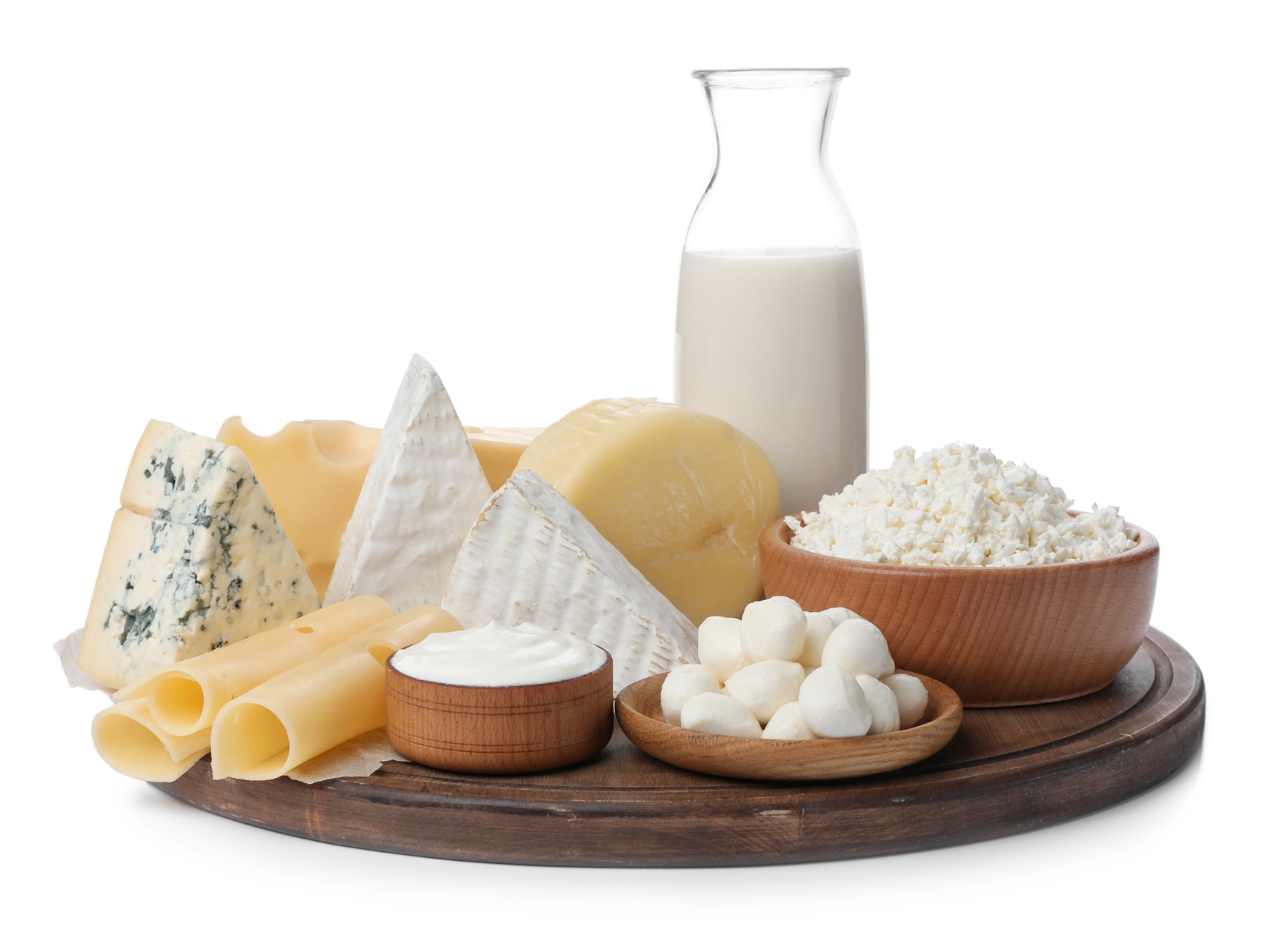 Go for high-fat, low-carb produce only, read the labels!
Go for high-fat, low-carb produce only, read the labels!- Greek yogurt
- Cottage cheese, cream cheese, sour cream, mascarpone, creme fraiche, etc.
- Soft cheeses such as mozzarella, brie, blue, jack etc.
- Hard cheeses like cheddar, parmesan, feta and swiss etc.
- Mayonnaise
Many put dairy foods high on the list for a ketogenic diet. I on the other hand look at the whole picture based on my personal opinion taken from experience and my understanding of foods etc. Personally, I don't think its good for the body to consume large quantities of dairy foods. I believe they can clog up the system over time which can lead to many physical problems and disabilities late on in life. This is why I have them here in this section.
That said, how much or how little of any particular dairy food depends on what dairy choices you make and how your body reacts to them. Most dairy produce is ideal for the ketogenic diet, but like all these foods it requires YOU to look at the nutrition label on the side of the package/container.
Stay away from any foods that contain over 5g of carbohydrate per 100g (5%). Aim for 5g or anything under which most dairy foods are. Cottage cheese, hard cheeses and soft cheeses all come into this category, depending on the brand, with hard and soft cheeses having the highest levels of fat and lowest carbohydrate content which is the aim here. Out of hard cheese and soft cheese it's the hard cheese that comes out on top for lowest carb-content. Please look at the nutrition labels yourself though to be sure.
Milk or Cream?
Milk, like other forms of dairy, can be difficult to digest for many people, and, like other dairy it also contains carbs. The thing is with milk though, most people can consume quite a lot throughout the day on breakfast cereal and in coffee etc. so it can be pretty easy to take in more carbohydrate than you might think. This wouldn't be so bad if it was high in fats but it isn't. In fact, it's fat to carb-ratio is quite balanced which is not what we want. A ketogenic diet is all about a high-fat, low-carb ratio, so milk isn't that helpful to us on this diet. Replace it with single cream.
Single Cream has roughly half the carb-content of milk but 5-6 times the fat content, great! Feel free to add it to your coffee in place of milk. Forget about sugar though, it's way too high in carbohydrate.
Butter and healthy margarines from health stores are also ideal ketogenic foods. Look for non-hydrogenated. Do keep an eye on saturated fats though as you don't really want to consume too much of that in my opinion. I've found some great non-dairy oil spreads that are made with avocado oil and coconut oil. They're high in monounsaturated fat which is the good stuff and low in saturated fat which is the not so good stuff but OK in moderation. These spreads are almost completely void of carbs too just like most dairy and non-dairy spreads which makes them ideal for the ketogenic diet. Have a look in your local supermarkets as well as your local health food store.
Butter has already been mentioned which is ideal for adding fat to cooking. Let’s not forget cheese and high-fat yogurts too though which can be eaten in moderation. A three-egg cheese omelette cooked in butter makes an ideal ketogenic breakfast or midday snack.
Mayonnaise is pretty good too, although it can be slightly over the recommended 5% carb-content, but if you don’t go over your daily allowance overall throughout the day it’s fine. Don't go for low calorie mayo though, we want the high-fat version to get those fats in!
Dairy is an excellent way to add extra fats to your meals. You can create sauces or vegetable dishes like cauliflower cheese. Just remember to keep your eye on the carbohydrate content of all dairy products and what you're taking in throughout the day.
Eggs
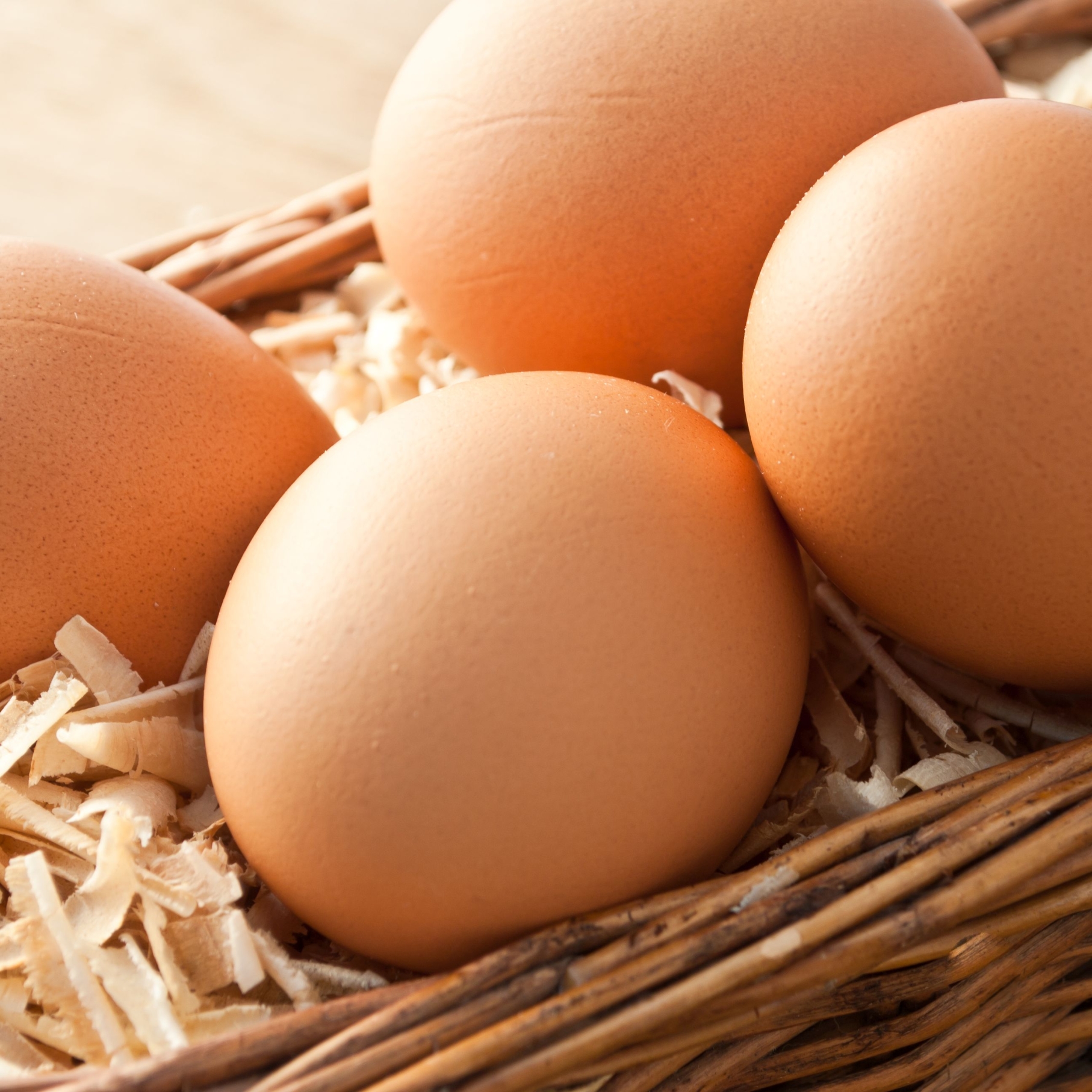 Go for free-range Omega 3 eggs
Go for free-range Omega 3 eggsEggs, like dairy above, in my opinion can clog the system if too many are eaten over long periods of time. This, I believe, may cause various physical problems later on. This does depend upon the general strength or weakness of your digestive system though, so some can get away with eating more dairy and eggs long-term than others as is the case with many things. It is for that reason however that they're listed here. There are various differing opinions about eggs in general though and just how many we should eat per day whether on a ketogenic diet or not.
Many people worry about the high cholesterol in eggs but eggs also contain lecithin which is a natural ‘cholesterol buster’! And, recent years have found that dietary cholesterol has little effect if any on blood cholesterol levels, especially when a strict low-carb diet like a ketogenic diet is followed where any calories and fat consumed would just be eaten up by the body's energy needs. How many eggs should be eaten per day is often a matter of opinion though as I've said, but my personal opinion is 3-6 eggs per day for a ketogenic diet.
Eggs are often considered a dairy food but are probably more correctly labelled as 'animal produce'. Eggs are packed with nutrients and can be eaten however you want to cook them, although I believe poaching or scrambling them is the healthiest way as I once read somewhere many years ago that frying eggs hardens the protein making them harder to digest. This immediately resonated with me and has stuck with me ever since. It makes total sense really don't you think? The white of a fried egg definitely seems harder than that of a poached egg doesn't it?
Anyway, 3-4 eggs whisked with some cream and scrambled in butter are an ideal low-carb, high-fat snack that's perfect for our ketogenic diet, great!
Fruits
All fruits are classed as 'simple carbohydrates' as they're absorbed into the system quickly. I'm talking about the fruits we have in our fruit bowl, and not vegetable fruits such as tomatoes etc. This means fruits offer an excellent quick pick-me-up by providing the body with some quick-release carbohydrate energy. This makes them ideal if you're feeling a bit low or you're going to do some exercise where you can eat them an hour or so before-hand. Don't go over-board though as many fruits are high in carbs!
These fruits can all be eaten in moderation on a ketogenic diet.
- Blackberries, blueberries, cranberries, mulberries, raspberries strawberries etc.
- Watermelon, cantaloupe, galia and honeydew melons
- Coconut, rhubarb
These fruits might need to be eaten less frequently or avoided completely as they are quite high in sugar and carbohydrate content.
- Apple
- Apricot
- Cherries
- Dragon fruit (Pitaya)
- Figs (fresh)
- Grapefruit
- Kiwi fruit
- Nectarine
- Orange
- Peach
- Pears
- Plums
Nuts and Seeds
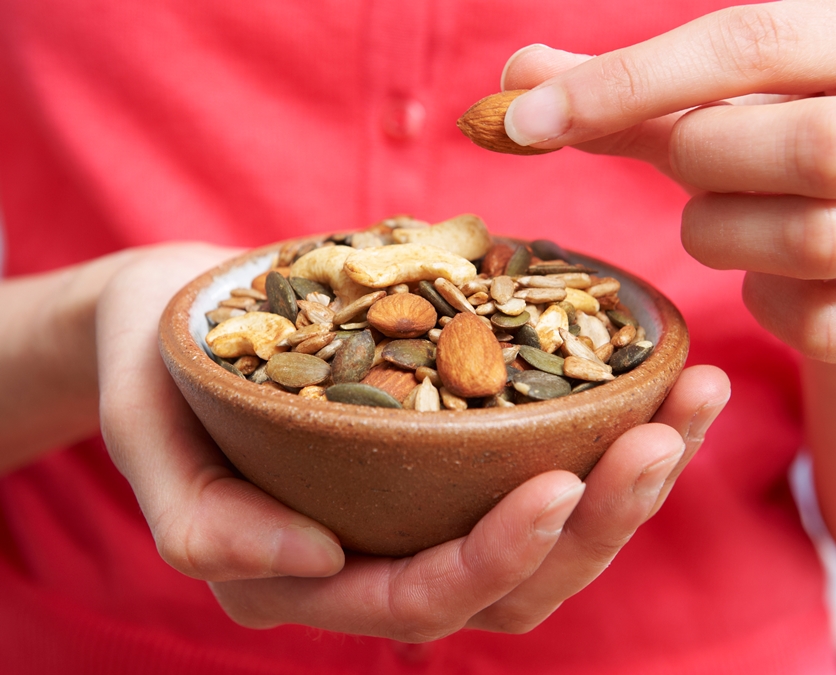 Nuts and seeds add fats and nutrients
Nuts and seeds add fats and nutrientsNuts and seeds add healthy fats with an abundance of nutrients and fibre to the ketogenic diet. They're ideally best added to salads and similar dishes rather than sit there filling your face with them as they do contain some carbs and you can munch through them real quick so keep an eye on your intake. Not only that but they're also quite hard to digest.
Nuts
- Almonds
- Brazils
- Hazelnuts
- Macadamia (very low in carbohydrates)
- Peanuts
- Pecans
- Pine nuts
- Walnuts
Cashews and Pistachios should be left out of the diet as they're both high in carbohydrate with cashews being a whopping 7.5g per 100g and pistachios around 5g per 100g.
Seeds
- Flax seeds
- Pumpkin seeds
- Sesame seeds
- Sunflower seeds
- Tahini
Tahini is creamed sesame seeds traditionally used to make humus by blending it with chick peas. A great tasting and perfect keto-alternative however (as chick peas shouldn't be eaten on a ketogenic diet) can be made with avocado, great! For a simple recipe and method take a look at the Cook For Your Life Website.
Soy Bean Products
- Natto
- Tempeh
- Soy sauce
- Green soy beans (Edamame)
- Black soybeans
Condiments
- Tomato puree, passata and ketchup - sugar free only
- Cocoa and carob powder, extra dark chocolate should be at least 70%, better 90% and beware of soy lecithin, cocoa powder
Alcohol
- Dry wines, spirits (unsweetened/no sugar)
Only very small amounts and better avoided completely.
Back To Top
Ketogenic Food List
Avoid These Foods Completely
These foods are not included on a ketogenic diet as they contain too much carbohydrate, sugars and/or additives. That's not to say they shouldn't be eaten when the going gets tough and you're finding it too difficult to continue though. During such times, rather than giving up completely small amounts could be eaten, and if you do, always try to eat natural, unprocessed foods.
Always read the ingredient and nutritional content list of all foods to keep an eye on any unnatural ingredients as well as the carbohydrate content. That way you can still keep your carb intake within a certain level on such days of difficulty so you don't go overboard.
Breaded Fish & Marinated Meats
- Avoid all fish and meat products covered in breadcrumbs or marinated in sauces of some type or another. Breadcrumbs are high in carbohydrate as are many marinate sauces that contain sugar and other high carb fillers.
- Hot dogs are pretty poor nutritionally and often contain fillers high in carbs.
All Grains and Related Products
All grains in all forms contain high levels of carbohydrate and are therefore unsuitable for the ketogenic diet. Related products include; biscuits (cookies), bread, cakes, cereals, crackers, crisps (chips), pasta, all pastries and sprouted grains.
 All grains are far too high in carbohydrate for the ketogenic diet
All grains are far too high in carbohydrate for the ketogenic dietVarious Grains Include;
- Amaranth
- Buckwheat
- Barley
- Bulgur
- Corn
- Millet
- Oats
- Quinoa
- Rye
- Rice
- Sorghum
- Wheat
- Wholemeal
Starchy Foods
All of these contain high levels of carbohydrates too high for the ketogenic diet.
- White potatoes
- Yams
- Bananas
High Sugar, High Carb Fruits
These fruits should ideally be left out which is why they are in this section. They can be eaten as a quick pick-me-up though as previously mentioned for other fruits for some quick-release energy but very sparingly.
- Pineapple
- Mangoes
- Papayas (paw paw)
- Plums
- Apples
- Nectarines
- Kiwis
- Cherries
- Fresh figs
- Pears
- Tangerines
- Grapes
Dried Fruits
All dried fruits are very high in carbohydrates and sugars and include the following.
- Apricots
- Dates
- Figs
- Mango
- Papaya
- Pear
- Raisins
- Sultanas
Sugary Drinks and Products
- Sports drinks
- Soda/pop drinks
- Candy/sweets/chocolate etc.
Other foods to leave from the diet are;
Low-fat foods
These are often higher in sugars and carbohydrates than the full-fat versions. Don't forget to read the nutrition list on the packaging.
Alcoholic, Sweet Drinks
Again, this is about the sugar content which includes carbohydrates that the ketogenic diet is trying to keep down. No beer, sweet wine or sweet cocktails on a ketogenic diet I'm afraid, sorry.
Pulses
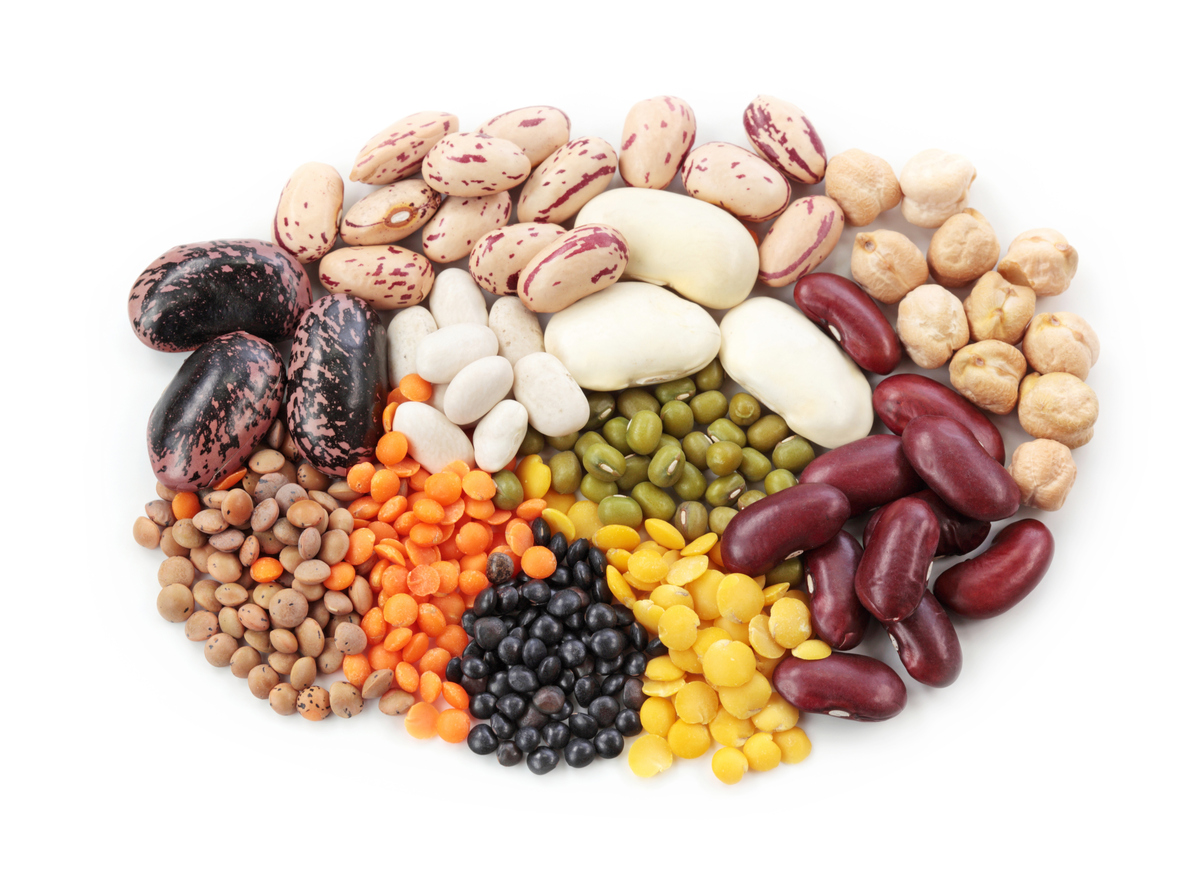 Beans and pulses are too high in carbs for Keto!
Beans and pulses are too high in carbs for Keto!All pulses are quite high in carbohydrates so should be left out of our ketogenic diet. This includes all beans such as; haricot beans, kidney beans, butter beans, black eyed peas/beans, cannellini beans, flageolet beans, pinto beans, aduki beans, borlotti beans, split peas, chick peas and lentils etc.
Back To Top
The Standard Ketogenic Diet &
Creating and Implementing a
Ketogenic Diet Plan
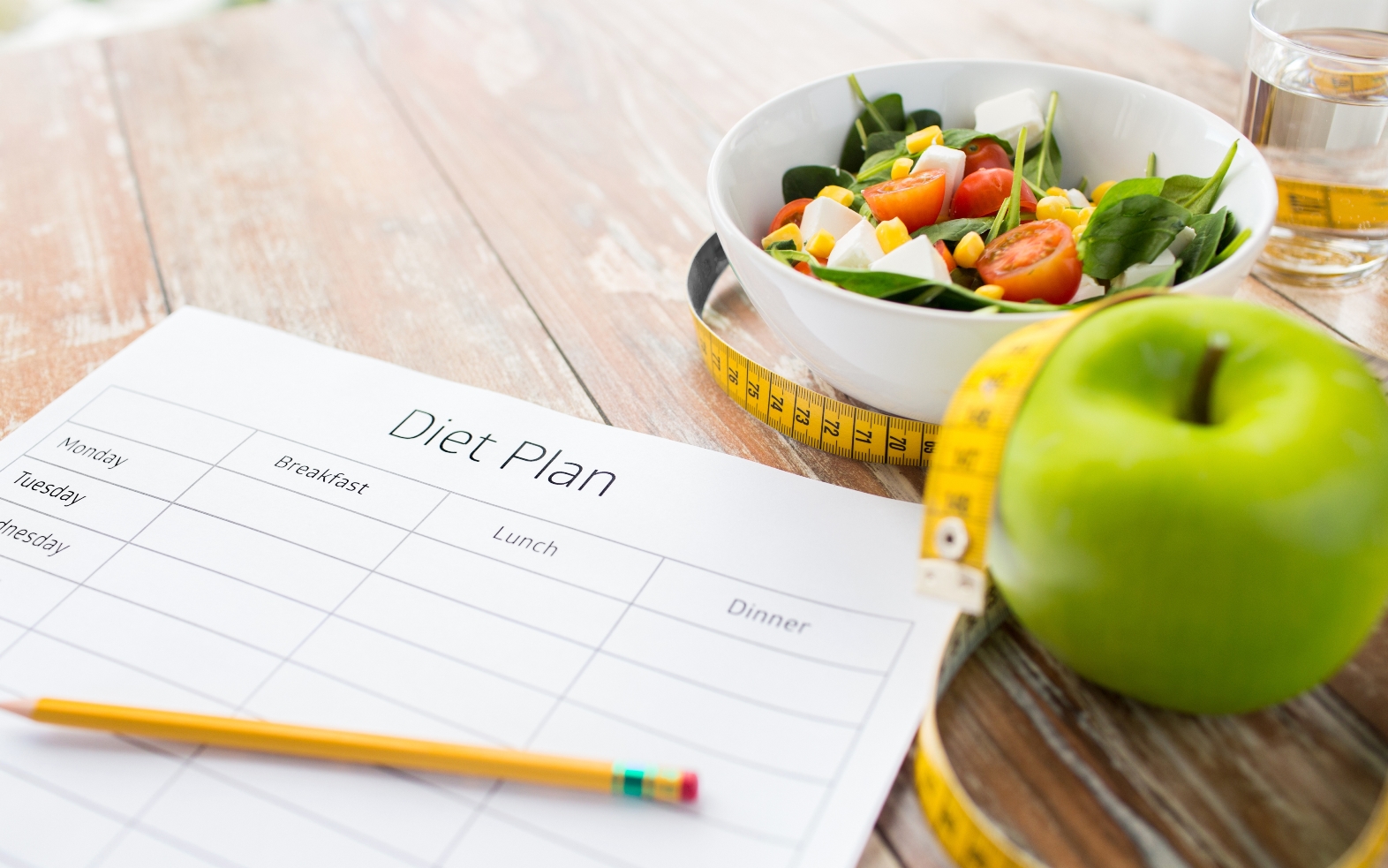 Making a plan and writing things down can help motivation and commitment!
Making a plan and writing things down can help motivation and commitment!Most people who follow a ketogenic diet and lifestyle tend to stick with the standard version that offers a slightly less aggressive approach than the one that's often recommended by doctors for medical reasons. The goal is to get your body into a state of ketosis and keep it there for most of, if not all of the time. This is done by closely monitoring your macro-nutrients so that your food choices result in as little insulin production as possible.
Macro-nutrients are the opposite of micro-nutrients. 'Macro' meaning large, while 'micro' means small. Our macro nutrients therefore are the main nutrients in our diet which are carbohydrates, protein and fats.
Macro-ranges vary from person to person, but in general, the following breakdown will get most people into a state of ketosis:
- Carbohydrates – Most people can achieve ketosis when consuming less than 50g of carbohydrates. Although many ketogenic followers try to stay below 30g and others may even go as low as 10g of carbohydrate intake per day.
- Fat – Healthy dietary fat should make up the majority of your ketogenic diet. Most people would normally consume around 40% of their calories from healthy fats, but it’s common for ketogenic followers to go up to 60% or even 70%.
- Protein – Too much protein can push you out of ketosis, especially if your lifestyle isn’t very active. Most people will consume around 30-40% of their daily calories in the form of protein. If you struggle to maintain ketosis, you may want to reduce your protein intake and consume more fat to see if it gives you better results.
The macro-nutrients that you need to eat in order to maintain ketosis will depend on various factors, including your activity level and the type of exercise that you do on a routine basis. This comes with practice and experience of the ketogenic diet in combination with your lifestyle and exercise routine. Also see exercises to burn fat.
When following a medically-prescribed ketogenic diet, most people will stick to a 3:1 or 4:1 fat to protein and carbohydrate ratio. This means that every gram of carbohydrate and protein is equaled with 3-4 grams of fat. This is a more aggressive macro-ratio though than most people need to burn fat and lose weight, boost cognitive benefits (increased thought processes) and generally improve their overall health. The higher your fat requirement the more difficult it is to stick to this diet long-term, so don’t hold yourself to the medical version of the diet unless you have a medical need to do so, in which case you should consult a doctor or dietary health care professional anyway.
Variations of the Ketogenic Diet
There are some problems that some people can face when trying to follow a ketogenic diet while living an active lifestyle. Due to the low intake of carbohydrates, some people may find they run out of energy during intense periods of activity with work or when working out in the gym or during some other form of exercise. The solution is often to follow a 'Targeted Ketogenic Diet Plan'. All this really means is that you slightly adapt your ketogenic diet to your individual needs. So, you'll follow the standard ketogenic diet daily, but allow yourself a small intake of carbohydrates before each intense workout or expected/planned period of activity.
If you choose 'slow-release carbs' like rice or potatoes for example, you'll want to eat those 3-4 hours before your expected 'increased activity' to allow for digestion, absorption and circulation before working out. Remember not to consume too much though or you'll undo all your hard work up until now which might set you back a couple of days or more. If, on the other hand, you choose 'quick-release carbs' in the form of fresh, sweet fruits like pears, mangoes, melon, apples etc. you can consume them 30-60 minutes before your workout as they are absorbed and released into the system far quicker, hence the name 'quick-release' carbs.
If you don’t have an extremely strenuous job and you don’t workout intensely most days, then you probably don’t need a carbohydrate loading day. As already said, this slight variation of the ketogenic diet is generally used by those involved in active lifestyles and on their feet all day.
Cheat Days
Some people also modify the standard ketogenic diet by allowing themselves to consume unlimited carbohydrates one day a week while following the standard ketogenic diet the rest of the week to indulge in a so-called 'cheat day'. This is known as 'carb loading' and is common practice for bodybuilders, weightlifters and athletes to replenish and load energy reserves prior to a competition for increased muscle size and energy/glycogen reserves. This is something I did when I ran the London marathons many years ago and it worked a treat!
True 'carb-loading' for professional athletes and what I did for the marathons is a little more complicated than just loading yourself with carbs on one day though, but it's not important for what we are discussing here.
So, if you’re thinking about having a 'cheat day' and think it will help to prevent you from breaking your ketogenic diet during the week then that's fine. Just be aware that you may not achieve the results that you desire, as a whole day of eating carbs will most definitely put you back a few days at least so you never really get ahead, because that cheat day will be coming around again soon after you get back into the 'ketogenic groove' during the week?
The point is, the ketogenic diet, like most diets, is ultimately intended to be a lifestyle, and you should really do your utmost to commit to changing your eating habits permanently if you want to enjoy long-term weight-loss results.
That said, it’s not always that easy to stick to this or any diet. If you feel like you need those 'cheat days' when starting out to help you, then maybe you could make it a cheat meal instead of a full day? Start to phase out those cheat meals as you mentally adjust to the diet. You may start out with one meal a week and then move it to once every two weeks, three weeks and so on until you rarely have a cheat meal. You have to do whatever works for you and for your long-term goal of getting slimmer. And remember not to be too hard on yourself if you trip up. There is no such thing as 'failure' in my opinion. It's more correctly called 'experience'.
Back To Top
One Week On The Ketogenic Diet
A Sample Menu
The best ketogenic diet meal plan is one that includes foods that you enjoy and that are convenient to your lifestyle. There are no foods that are off limits with this diet, so you’re left to look at the fat, protein and carbohydrate content of each food that you eat. Your goal is to determine the best ratio of these macro-nutrients for your body and your health goals so that you can keep your daily intake within those limits.
It can take some time to figure out the best ratio for your goals and to learn which foods you can eat and in what portions you should consume those foods. There's a lot of trial and error, and then it takes a lot of work to stay within your limits each day so you don't break your 'ketosis state'. This is why many epilepsy patients who follow a ketogenic diet plan work closely with a dietitian to find the correct ratios and then create professional, personalized meal plans.
You probably don’t have access to a dietitian unless your doctor has prescribed or suggested this diet for you, so we've created a sample one-week Ketogenic meal plan to give you some idea of what you may eat while following this diet. Just keep in mind how much protein, fat and carbohydrates you consume may vary from what is represented in this meal plan. Take some of these meals as ideas, and then create your own ketogenic meal plans based on your macro requirements and the foods that you find satisfying and what you enjoy.
What To Expect
Depending on your present health, diet and lifestyle, any change of diet can bring about certain symptoms. These symptoms can be flu like in their nature such as headaches, fatigue, body aches and irritability. These are due to the change of diet and are connected with detoxification. Make sure you drink plenty of water during such times which should help to clear these symptoms. In fact, drinking plenty of water is suggested generally as good maintenance anyway but also for a ketogenic diet too.
But if any of these 'detox symptoms' persist or feel too much, or if you ever feel concerned in any way, you should eat some foods that you are used to eating. Not too much though, just enough to make you feel better and get back to normal. Please read about detoxification to understand any possible side-effects you may have although to be honest
A ketogenic diet can sometimes be a natural diuretic so you could become dehydrated and thirsty as a result. This can also bring about these somewhat unpleasant symptoms, especially headaches. Some suggest taking in more salt to help with this. Personally, I would not suggest increasing salt intake as this can increase dehydration and thirst further? Dehydration and thirst can also be the result of salty meats in your ketogenic diet especially things like bacon and pork.
Simply drink plenty of water to re-hydrate the body with plenty of water and fruits such as strawberries that increase fluids naturally and help to replace electrolytes without taking in more salt. Salt is not good for our arteries, blood pressure and body as a whole. I think most would agree on this.
Daily Menus for 1 Week
Vegetarians can replace chicken with 'Quorn chicken fillets' and 'Quorn chicken pieces'. Steak and beef can be replaced with 'Quorn burgers', 'Quorn steak strips' and Quorn fajitas. Sausages can be replaced with Linda McCartney or similar sausages depending on the carbohydrate content. Quorn sausages are a bit too high in carbohydrate so please read the nutrition labels first. Vegetarian fish alternatives are hard to replace as they tend to be made with rice and other high-carb fillers so improvisation is key for us vegetarians!
See the US Quorn Store Locator.
Monday
- Breakfast: Omelette with cheese and your choice of sausage or bacon. Add some spinach if you want to give your body some carbs without breaking ketosis. Vegetarians can have a veggie sausage of some sort but make sure you're aware of the carb-content per item. Two Linda McCartney sausages contain around 7g of carbs which is not too bad. Quorn also make veggie bacon slices which are 5.4g per 100g.
- Lunch: Cobb salad, complete with sliced boiled eggs, avocado and grilled or oven-baked salmon or other oily fish. Vegetarians can have a salad with eggs, cottage cheese, avocado and olives.
- Dinner: Chicken with asparagus and broccoli on the side. Add half an avocado and/or some cottage cheese. Vegetarians can substitute chicken with Quorn chicken breasts/pieces or a similar low-carb chicken substitute.
Tuesday
- Breakfast: Green smoothie. Simply add spinach and/or kale, almonds, and coconut milk to your blender and mix it all up. You can add half an avocado too for extra healthy fats and for a more creamy texture! You could also add green supplement powders like spirulina, wheat-grass, Klamath lake blue-green algae etc. for extra vitamins and minerals. These are all very low in fats and carbs but high in nutrients so they're great supplements to any diet.
- Lunch: Oven baked eggs in avocado followed by cottage cheese or creme fraiche with fresh berries. Think strawberries,
blueberries, or raspberries, or perhaps a few of each.
- Dinner: Hamburger (no bun of course). Cook a fat, over-sized hamburger and top with cheese. Eat it on your plate like a steak with a side of leafy green veggies, asparagus, or broccoli. Vegetarians can substitute the burger with a Quorn vegetarian burger but add extra cheese and half an avocado too if you like. Do keep an eye on the carb-content of vegetarian alternatives. Quorn burgers are around 7.4g per 100g which is around 5g per burger as each burger is about 60g.
Wednesday
- Breakfast: Scrambled eggs with guacamole. Make your own guacamole with avocado and tahini in the blender. Add coconut oil if you like the taste.
- Lunch: Loaded spinach or mixed salad. Top a pile of mixed salad with olives, shredded cheese or cottage cheese, chicken breast chunks or strips of steak, and a high-fat dressing or olive oil. Vegetarians can use Quorn alternatives for the meats with 'Quorn chicken pieces' and 'Quorn steak strips'
- Dinner: Stir fry with either chicken or steak. Cauliflower and broccoli are excellent veggies to go with your meat, or go Chinese with bean shoots, and don’t be shy with the cold-pressed virgin olive oil either! Add some scrambled egg if you're still hungry. Vegetarians can substitute as with the lunch.
Thursday
- Breakfast: Poached eggs with bacon or sausage. Vegetarians can substitute as on Monday.
- Lunch: Grilled meat skewers. Pick up some wooden skewers and fire
up the grill for a fast, delicious lunch. You can use chicken, turkey,
steak, or whatever meat fits on the skewer when chopped in pieces. Add
onions, bell peppers, and courgette pieces to fill between each piece of
meat. Make some extras for dinner tomorrow. Vegetarians as previous meals with Quorn or similar low-carb meat-free substitutes.
- Dinner: Homemade chicken soup with chopped chicken breast pieces, onion, celery and courgette. This is fast and easy when made in the crock-pot. If you're still hungry have some poached or scrambled eggs with cheese on top and a sausage on the side but keep a close eye on your daily carb-intake. Quorn chicken pieces are ideal for us veggies for the soup as are Quorn sausages for the extra.
Friday
- Breakfast: Loaded scrambled eggs. Scramble them up and add spinach, bell peppers, cheese, and crumbled bacon or Quorn bacon slices for vegetarians. Have a cheese and olive salad as an extra if you still feel hungry.
- Lunch: Lettuce tacos. Brown some fatty hamburger and add taco seasoning. Wrap it up in large lettuce leaves along with sour cream and cheese. Add olives too if you want to. Vegetarians can use Quorn fajitas or steak strips as a great alternative taco filler!
- Dinner: Oven-baked salmon with avocado, cottage cheese and a mixed salad with olives. Alternatively, you can have meat and veggies from your leftover skewers from Thursday along with cauliflower rice. You can now buy frozen cauliflower rice, but it’s also very easy to make. It’s made from cauliflower but has the same texture and a similar taste to rice, great! Vegetarians can use previous ideas and alternatives.
Saturday
- Breakfast: Eggs, bacon and sausage with grilled tomatoes topped with grated cheese. Alternatively, Scrambled eggs and bacon, or steak strips, with grated cheese wrapped in lettuce leaves. Vegetarians know what to do now I think with Quorn alternatives.
- Lunch: Tuna salad. Tuna mixed with mayonnaise with sliced avocado is fast and easy to make. Add cottage cheese and sliced olives and wrap it in lettuce leaves as an alternative to a regular salad. Vegetarians can have egg mayonnaise instead of the tuna and keep everything else the same, great!
- Dinner: Pork tenderloin seasoned with salt, pepper, and coconut oil. Make a side salad with sliced boiled eggs or avocado with your choice of green veggies for the side. Vegetarians will find this hard to replace and keep low-carb. Linda McCartney pulled pork is a great alternative I think despite it being around 11g of carbohydrate content for one burger. You can get away with this though depending on what your chosen daily carb-content is? You can have it as a treat with melted grated cheese and/or avocado.
Sunday
- Breakfast: Egg muffins. Put eggs in a bowl and mix with cheese and your choice of veggies and seasoning. Mix together well and then pour the mixture into a muffin pan and bake. You can even freeze these for fast heat-and-go keto-breakfasts.
- Lunch: Bacon-wrapped chicken nuggets. Who wants McDonalds when you can cut chicken breast into small pieces, wrap them with bacon, and season with garlic powder before baking? Put them in the oven on a foil-lined dish for up to 30 minutes at 400 degrees. Vegetarians, like all these ideas I've done this one too with Quorn chicken fillets and Quorn bacon slices. Reduce the cooking time for Quorn though.
- Dinner: Tinned mackerel or sardines in tomato sauce or vegetable oil for extra fat. Serve with mixed veg and top with grated cheese. Alternatively, have a side salad with avocado or a sliced boiled egg and/or cottage cheese. Vegetarians can have anything from previous veggie ideas in place of the fish.
Other Points
For speed, if you're pushed for time or you just can't be bothered with all the time prepping and preparing food, then used tinned where possible and frozen vegetables where relevant. The menus above are just ideas of mine that can be played around with as you please.
Remember, it's OK if you go over 5g per food item as you just need to work out what your net carb-intake is for each meal and then what it is for the day. Just so long as you don't go over your chosen daily carbohydrate threshold you'll be fine.
Back To TopThis page is still not finished and will continue to be added to until it is, so please keep coming back. Thank you.
Quick Weight Loss Tips | Exercises To Burn Fat
Vegetarian Diet Plan | Detoxification | Healthy Colon Foods
Quick Weight Loss Diets (Home)
Please Help the World's Wildlife by Supporting WWF and add your name to their petitions to help support their on-going great work. It won't matter what we eat if there's no world left!
Please click the link below to help...
https://www.wwf.org.uk
